Creating a beautiful yard in Colorado means embracing the state's unique climate and rugged natural beauty. The key is to design a space that is not only visually appealing but also sustainable and resilient. From water-wise xeriscaping to creating cozy outdoor living areas that take advantage of the stunning mountain views, the possibilities are endless. These Colorado landscaping ideas blend hardy native plants, natural stone, and thoughtful design to craft a landscape that thrives in the Rocky Mountain environment, offering year-round interest and enjoyment while respecting the local ecosystem. This approach ensures your yard is a true extension of its magnificent surroundings.
1. Xeriscaping with Drought-Tolerant Plants

Xeriscaping is a smart and sustainable approach for any Colorado yard, focusing on minimizing water usage without sacrificing beauty. This design philosophy utilizes drought-tolerant plants like agave, yucca, and various ornamental grasses that are naturally adapted to arid conditions. By grouping plants with similar water needs and using mulch to retain soil moisture, you can create a vibrant, textured landscape that requires minimal irrigation. Consider incorporating decorative rocks and gravel pathways to add structure and contrast. This method not only conserves a precious resource but also reduces maintenance, allowing more time to enjoy your outdoor space rather than constantly tending to it.
2. Incorporating Native Colorado Wildflowers
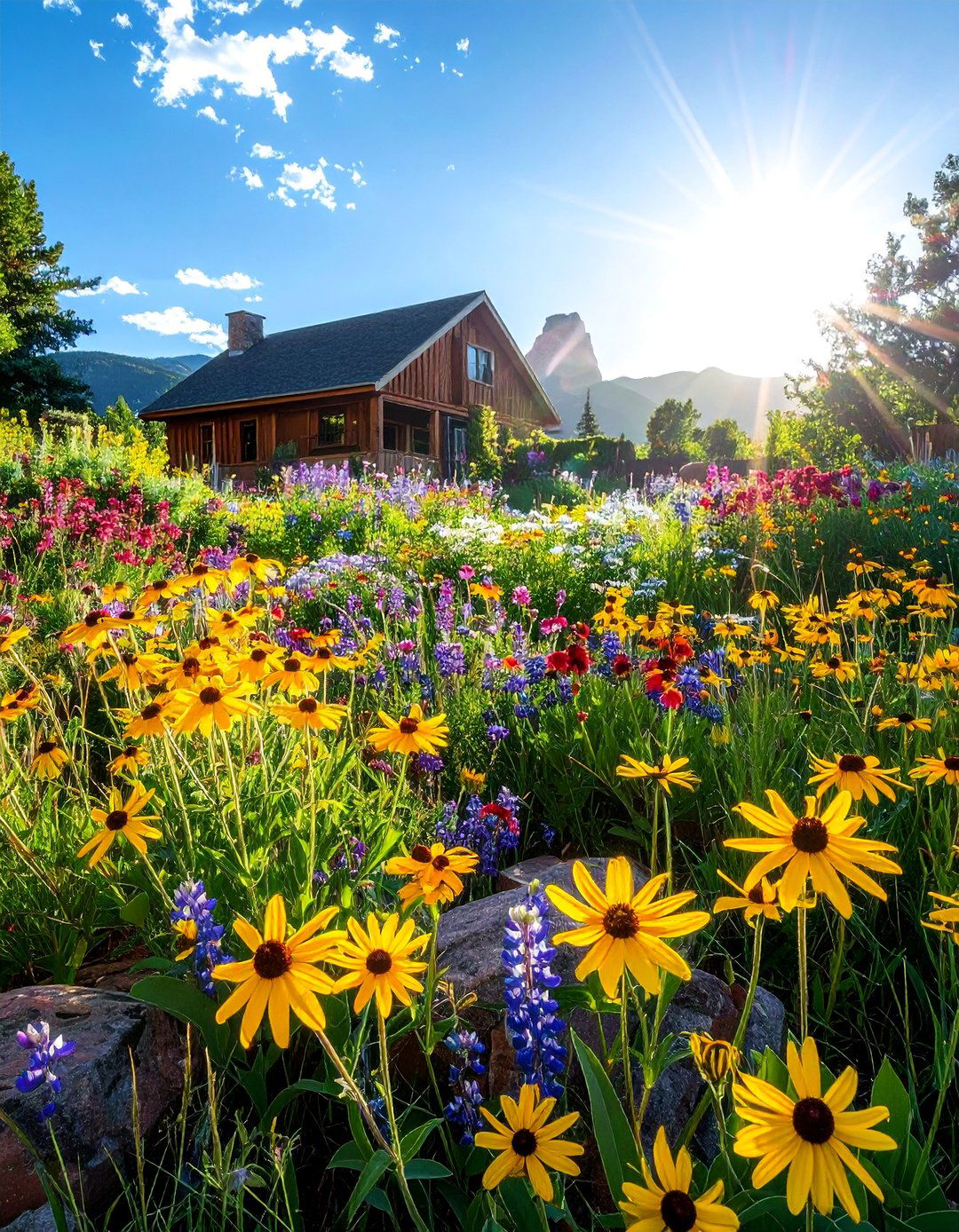
Bringing native Colorado wildflowers into your landscape creates a stunning, low-maintenance meadow effect that supports local pollinators. Plants like the iconic Rocky Mountain Columbine, vibrant Indian Paintbrush, and cheerful Black-Eyed Susans are perfectly adapted to the state's soil and climate, requiring less water and care than non-native species. Planting them in clusters or drifts mimics their natural growth patterns, resulting in a display that changes beautifully throughout the seasons. This approach not only provides a burst of color from spring through fall but also fosters a healthy ecosystem by providing food and habitat for bees, butterflies, and birds right in your backyard.
3. Designing with Natural Sandstone Patios
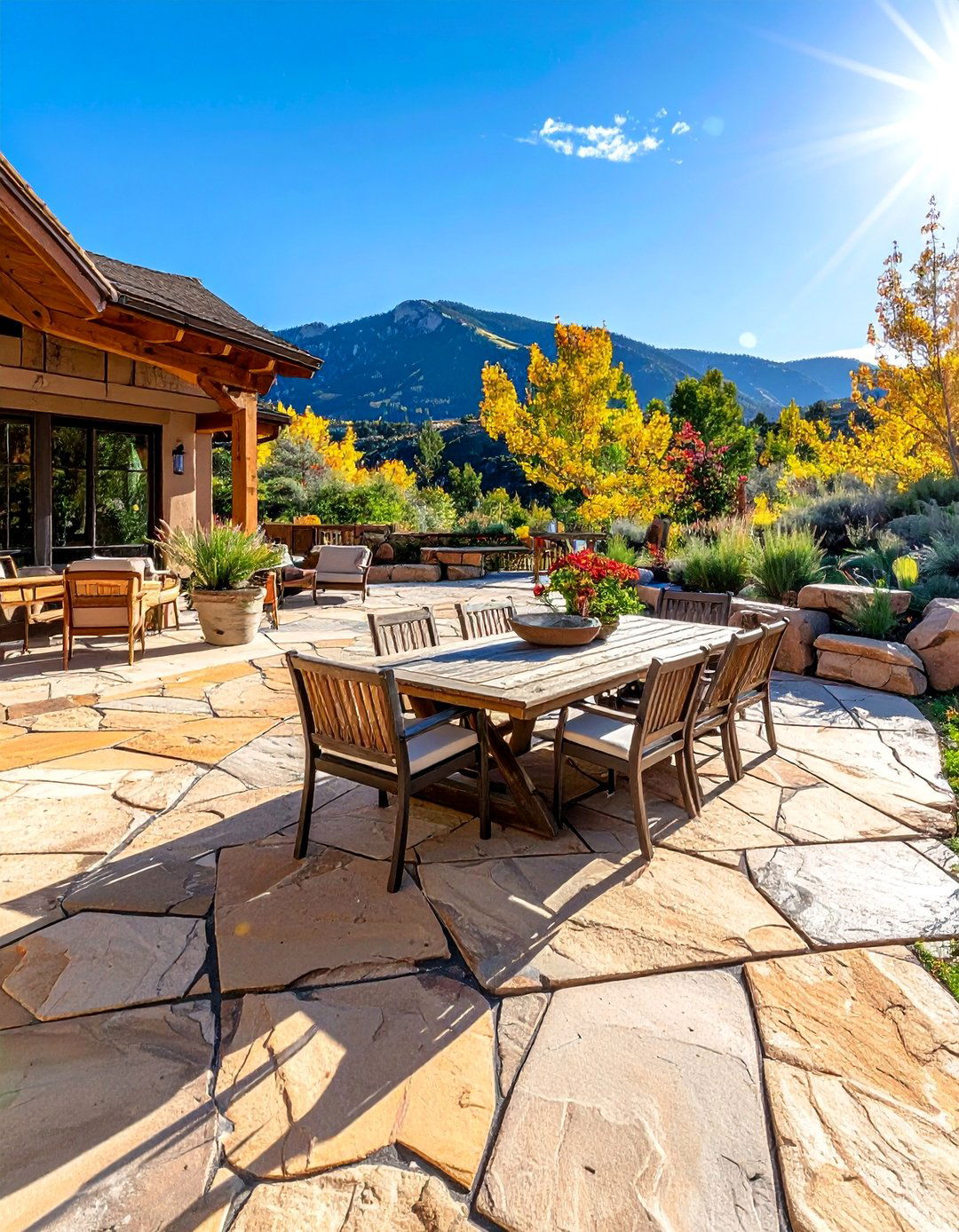
For an authentic Colorado feel, a natural sandstone patio provides a durable and beautiful foundation for outdoor living. The warm, earthy tones of sandstone, ranging from tan to reddish-brown, blend seamlessly with the state’s natural landscape. Whether you choose large, irregular flagstones for a rustic look or precisely cut pavers for a more formal design, this material adds timeless elegance. A sandstone patio is perfect for setting up dining areas, seating arrangements around a fire pit, or a quiet spot for morning coffee. It’s a practical choice that withstands Colorado’s temperature swings while creating a welcoming and functional outdoor room.
4. Building with Dry-Stack Stone Walls
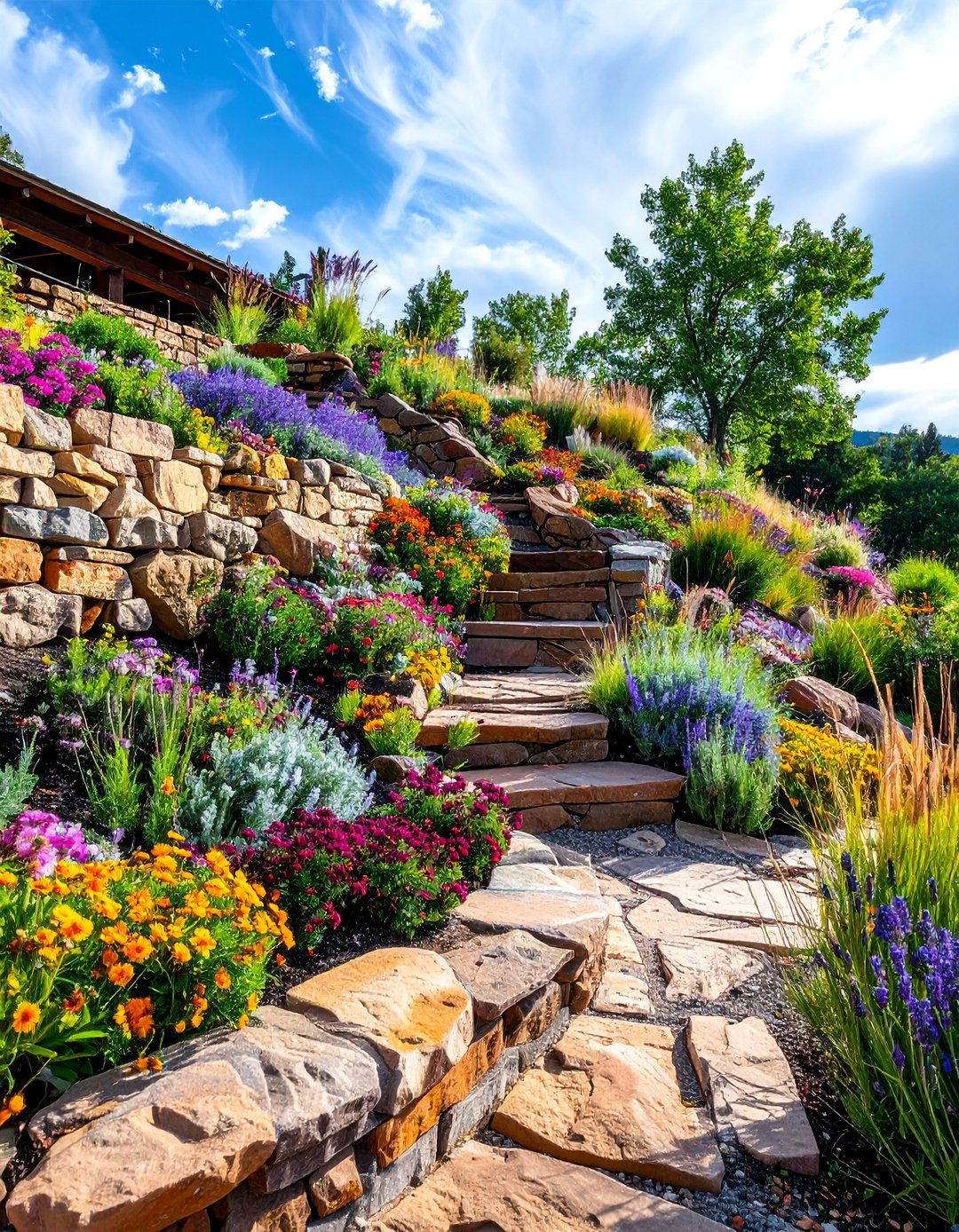
Dry-stack stone walls offer a rustic and structurally sound way to manage slopes and create terraced garden beds in a Colorado landscape. Constructed without mortar, these walls rely on the careful placement and interlocking of stones, allowing for natural drainage and flexibility with ground movement. Using locally sourced stone ensures the walls harmonize with the surrounding environment, appearing as if they've been part of the scenery for years. They are perfect for defining garden borders, creating raised planting areas for vegetables or flowers, or simply adding texture and dimension to your yard. This ancient technique brings a sense of permanence and natural artistry to any design.
5. Planting Aspen Groves for Vertical Interest
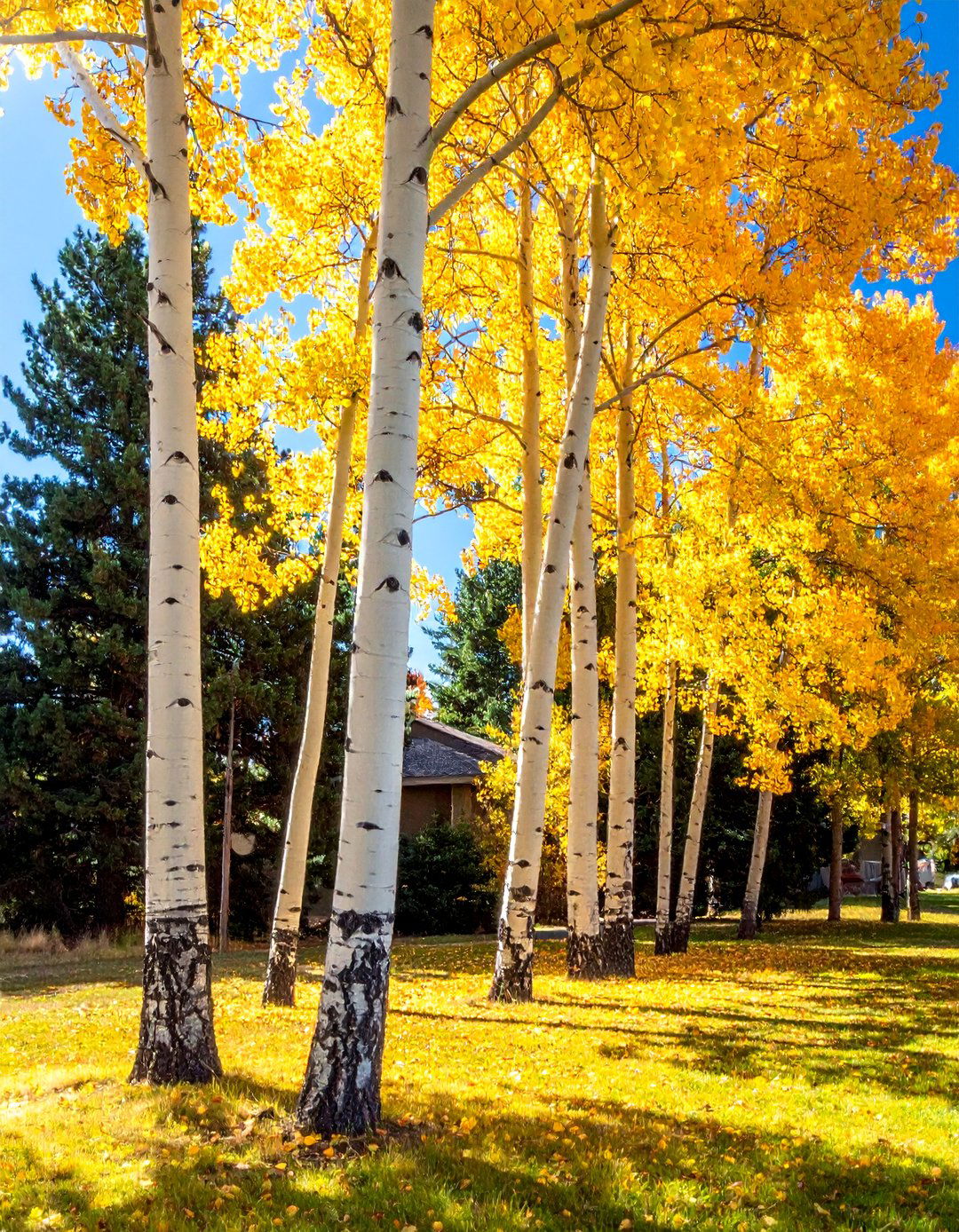
An aspen grove is a classic Colorado landscaping feature that adds vertical interest, beautiful seasonal color, and a connection to the state's mountain scenery. The slender, white trunks of Quaking Aspens create a striking visual contrast against evergreen backdrops or a clear blue sky, while their leaves shimmer and rustle in the slightest breeze. In autumn, they turn a brilliant golden-yellow, creating a spectacular display. Aspens are well-suited to Colorado's climate and can be planted in small groups to create a naturalistic woodland feel. They provide dappled shade in the summer, making them ideal for planting near a patio or seating area.
6. Creating a Functional Outdoor Kitchen Space

An outdoor kitchen transforms a simple patio into a full-fledged entertainment hub, perfect for enjoying Colorado's many sunny days. Designing this space involves more than just a grill; consider incorporating built-in countertops from durable materials like granite or concrete, a small refrigerator for drinks, and storage for cooking utensils. A sink adds convenience, while a pizza oven or smoker can elevate your culinary capabilities. Situated with views of the mountains or your garden, an outdoor kitchen becomes the heart of your backyard, allowing you to cook, dine, and socialize without ever leaving the fresh air and beautiful scenery behind.
7. Installing a Bubbling Rock Water Feature
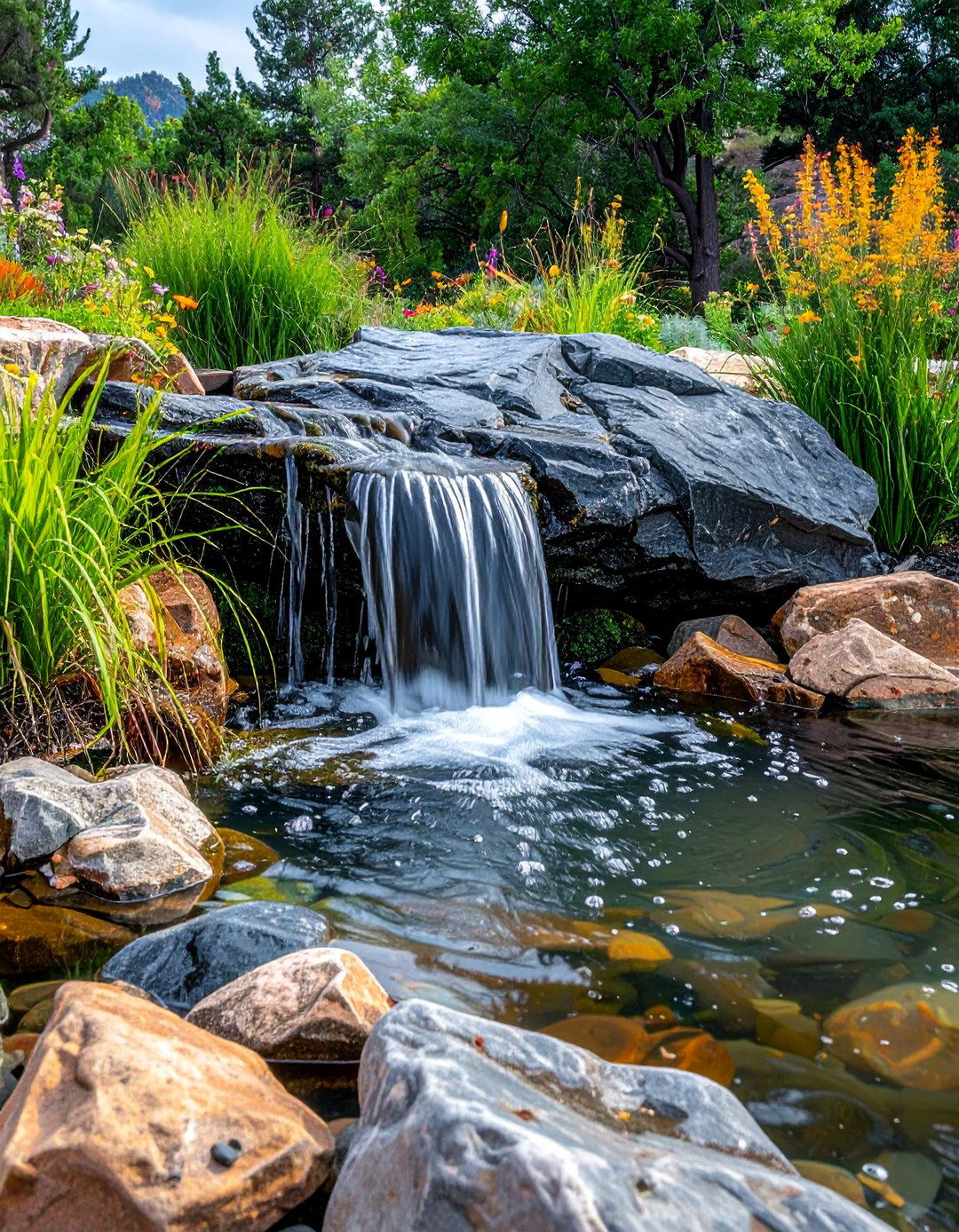
A bubbling rock water feature is an excellent way to add the soothing sound of water to your Colorado landscape without the high water consumption of a large pond or fountain. This feature consists of a large boulder with a hole drilled through it, where water is pumped up and gently bubbles over the surface before recirculating from a hidden underground reservoir. It's a self-contained system that minimizes evaporation and maintenance. The gentle sound masks neighborhood noise and creates a tranquil focal point, attracting birds and other wildlife. It’s a perfect, water-wise solution for adding a touch of serenity to a garden bed or patio corner.
8. Designing a Fire-Wise Defensible Space
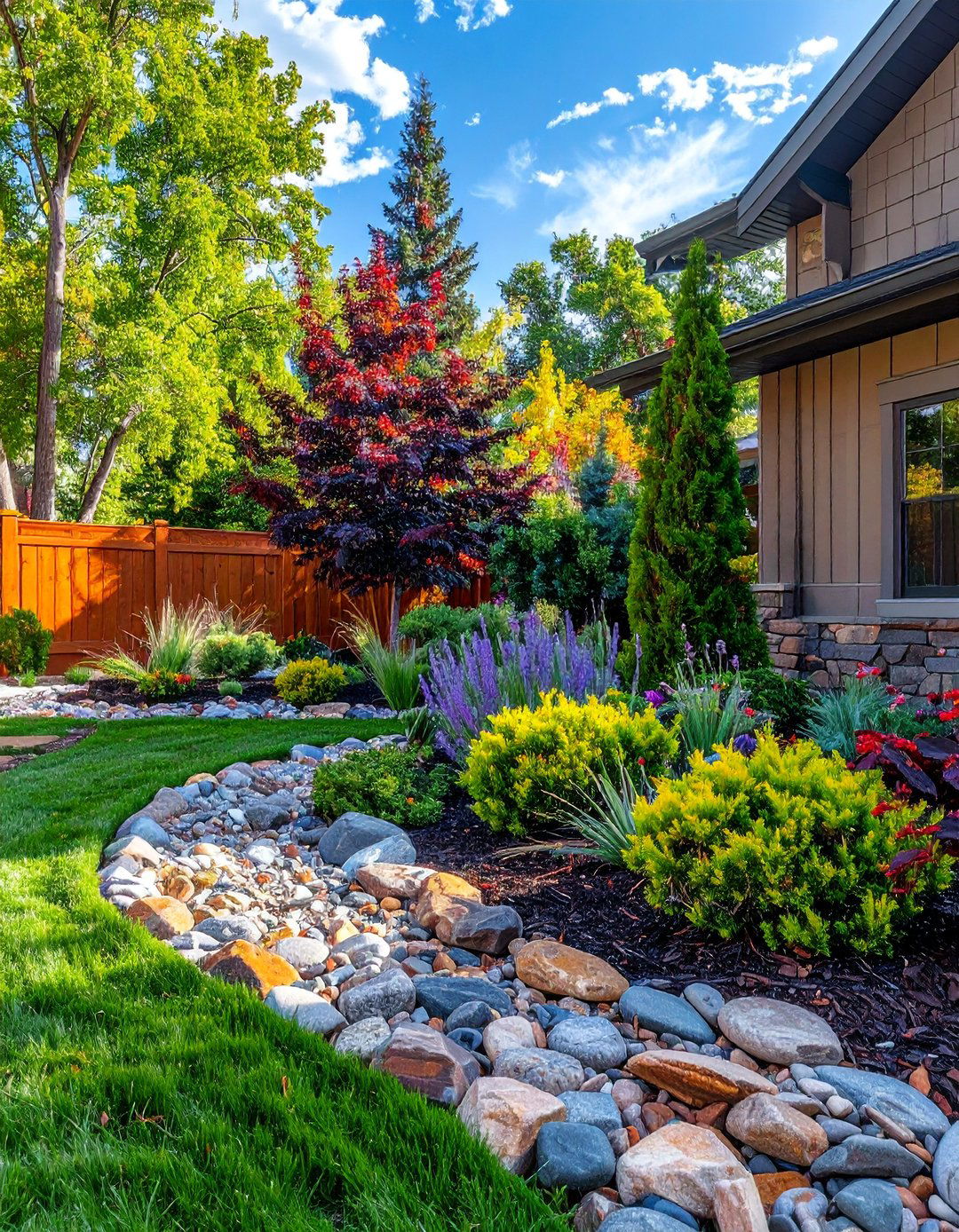
For homeowners in many parts of Colorado, designing a fire-wise landscape is a critical safety measure. This involves creating a defensible space around your home by carefully selecting and placing plants and materials to reduce wildfire risk. Start by removing flammable vegetation within 30 feet of your house, opting for well-irrigated, low-growing herbaceous plants like yarrow or catmint. Use non-combustible materials like gravel, pavers, or rock mulch for pathways and patios, which act as firebreaks. Pruning trees to remove low-hanging branches and ensuring they are spaced far apart further minimizes the chance of a fire spreading, protecting both your home and community.
9. Utilizing Ornamental Grasses for Texture and Movement

Ornamental grasses are a cornerstone of Colorado landscaping, offering four-season interest, texture, and graceful movement. Varieties like Blue Avena Grass, Feather Reed Grass, and Little Bluestem are exceptionally drought-tolerant and thrive in the local climate. Their fine blades and feathery plumes catch the wind, bringing a dynamic quality to otherwise static garden beds. In fall and winter, their dried foliage and seed heads provide structure and visual appeal, looking particularly beautiful when dusted with snow. Plant them in large drifts for a prairie-inspired look or use them as accents among perennials and shrubs to soften hardscaping and add a touch of wildness.
10. Building a Pergola for Defined Outdoor Seating
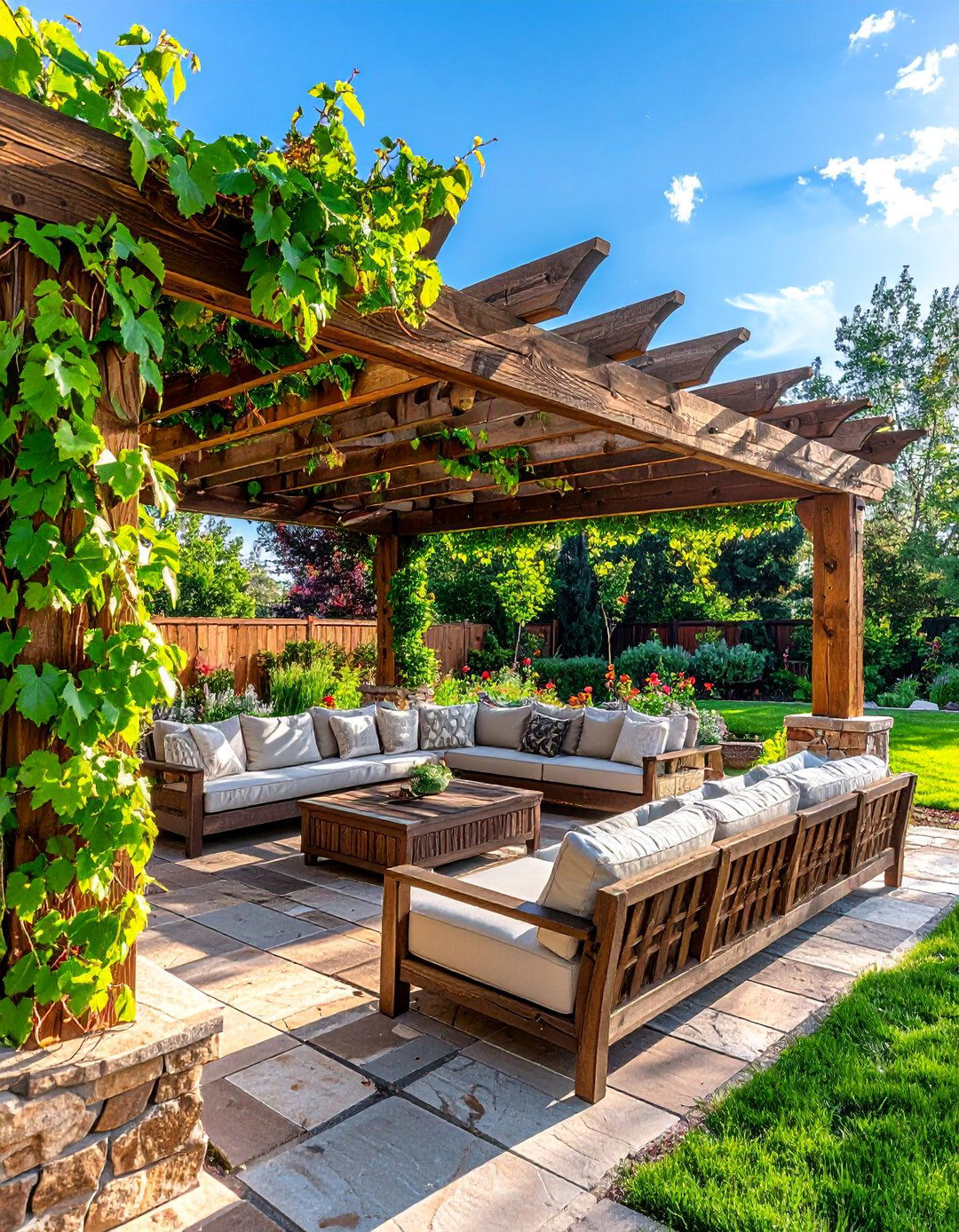
A pergola is a fantastic architectural element for a Colorado yard, creating a defined outdoor room and offering a respite from the intense sun. Constructed from wood, metal, or composite materials, a pergola can be designed to match your home's style, from rustic timber-frame to sleek modern lines. It can be positioned over a patio or deck to frame a dining or lounging area. For added shade and beauty, you can train climbing plants like clematis or hops to grow up the posts and across the rafters. This structure not only adds functional shade but also provides vertical interest and a sense of enclosure.
11. Creating Raised Garden Beds for Vegetables
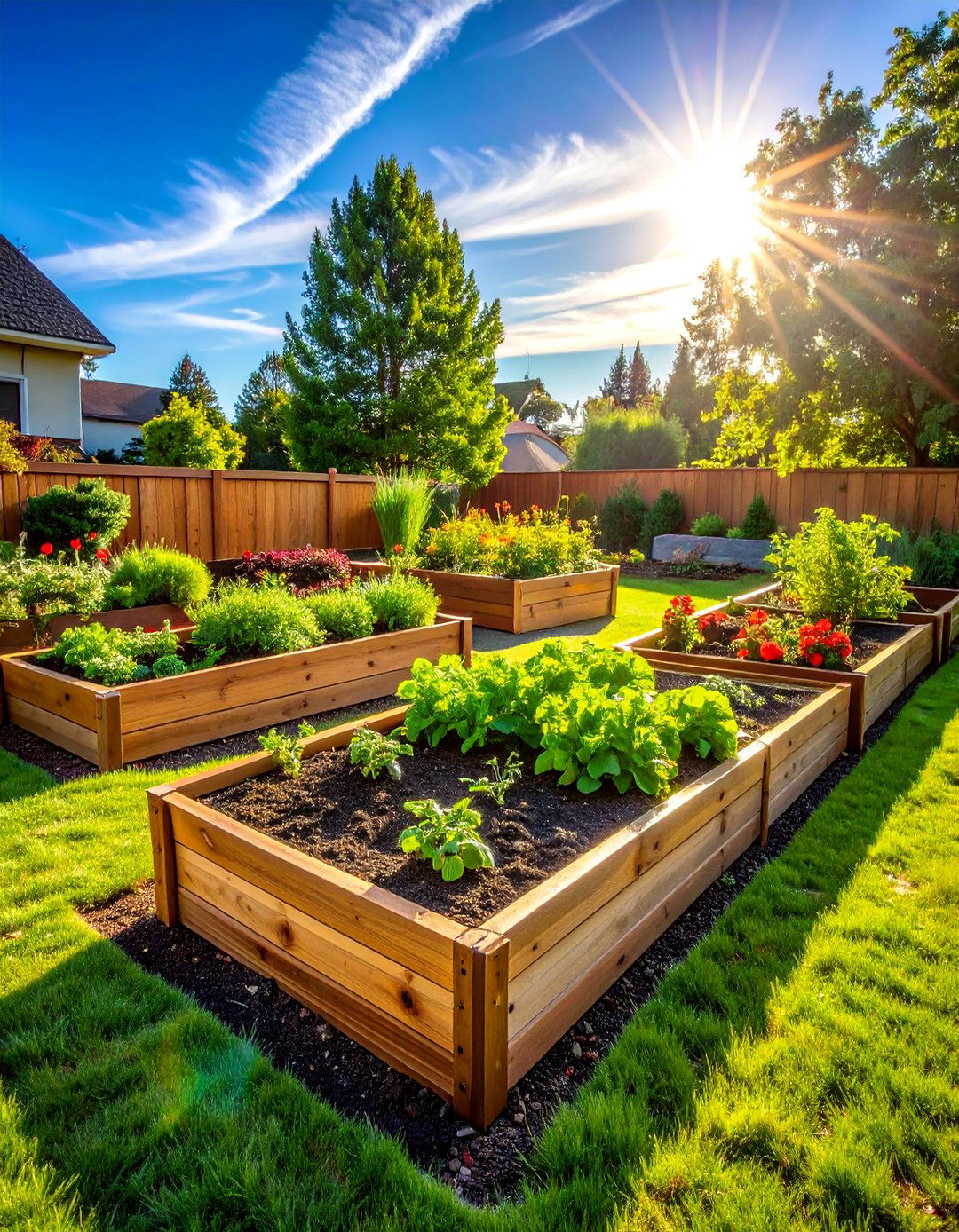
Raised garden beds are an ideal solution for vegetable gardening in Colorado, where soil can often be rocky or heavy clay. By building enclosed beds with untreated wood, stone, or galvanized metal, you can fill them with a custom mix of high-quality soil and compost, providing the perfect growing medium for your plants. This setup also offers better drainage and warms up faster in the spring, extending the relatively short growing season. The elevated height makes planting, weeding, and harvesting easier on your back. Raised beds create a neat, organized, and highly productive space for growing everything from tomatoes and peppers to leafy greens and root vegetables.
12. Using Gravel and Decomposed Granite Pathways

Gravel and decomposed granite pathways are a practical and aesthetically pleasing choice for Colorado landscapes, offering a permeable surface that fits with a naturalistic or xeric design. These materials are cost-effective, easy to install, and require minimal maintenance compared to turf. They create informal, meandering paths through garden beds or more structured walkways connecting different outdoor living areas. The crunchy sound underfoot adds a sensory element to the garden experience. Available in various colors, from earthy tans to cool grays, they can be selected to complement your home's exterior and other hardscaping materials, unifying the overall design while helping with water management.
13. Incorporating a Sunken Fire Pit Area

A sunken fire pit creates an intimate and sheltered gathering spot, perfect for cool Colorado evenings. By excavating an area and building retaining walls with stone or concrete blocks, you can design a cozy, recessed nook that feels like a natural extension of the landscape. This design helps block the wind and contains the warmth of the fire, making it more comfortable for guests. Built-in bench seating along the perimeter maximizes space and provides a permanent, integrated look. Surrounded by plants or looking out at a mountain view, a sunken fire pit becomes a dramatic focal point and a favorite destination for socializing year-round.
14. Planting for Four-Season Visual Interest

Given Colorado's distinct seasons, designing a landscape with year-round visual interest is essential. This strategy involves layering plants that offer something beautiful in each season. Start with a backbone of evergreens like Colorado Blue Spruce or Juniper for winter structure and color. Add deciduous trees and shrubs known for their spring flowers or fall foliage, such as Serviceberry or Dogwood. Incorporate summer-blooming perennials like coneflowers and Russian sage for vibrant color, and finish with ornamental grasses that provide texture and form through the winter. This thoughtful combination ensures your yard is never dull, offering a constantly evolving display of color, texture, and life.
15. Integrating Boulders for a Naturalistic Feel

Integrating large boulders into your landscape is a powerful way to mimic Colorado’s rugged, mountainous terrain and create a strong sense of place. Boulders can be used as dramatic focal points in a garden bed, to anchor a corner of your property, or to create natural-looking retaining walls on a slope. When placing them, bury about one-third of the rock to make it appear as if it has been there forever. Grouping them in odd numbers of varying sizes creates a more natural composition. Boulders provide structure and contrast beautifully with the soft textures of plants like ornamental grasses and groundcovers.
16. Using Corten Steel for Modern Edging and Planters
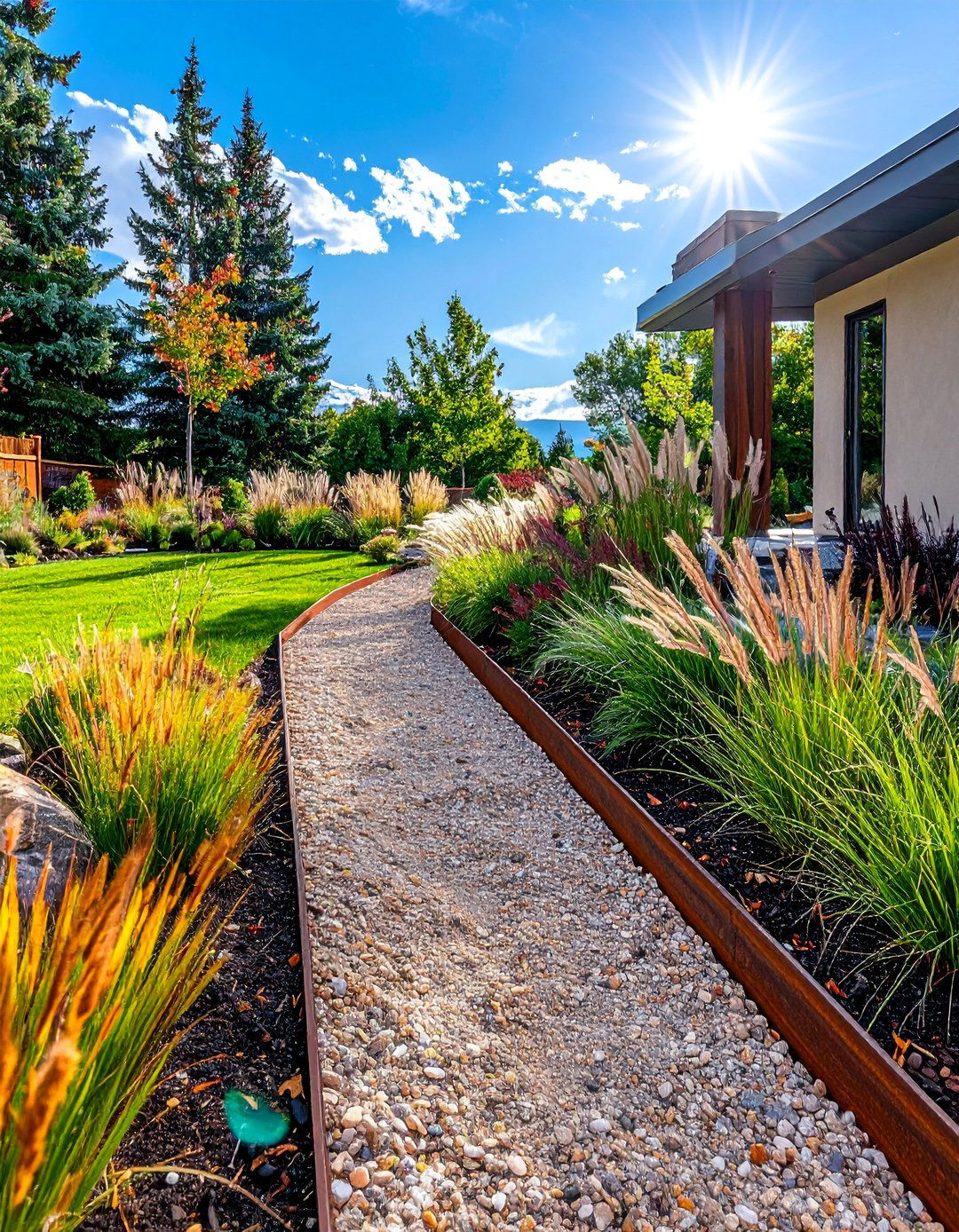
Corten steel, with its distinctive rust-like patina, brings a sleek, modern, yet earthy element to Colorado landscaping. This durable steel alloy is designed to form a stable, protective layer of rust when exposed to the weather, eliminating the need for painting. It can be used to create clean, crisp edging for garden beds and pathways, providing a sharp contrast against gravel or plants. Corten steel is also a popular material for constructing contemporary raised planters or retaining walls. Its warm, reddish-brown hue complements the natural tones of stone and wood, making it a versatile choice for adding a touch of industrial chic to your yard.
17. Designing a Rain Garden to Manage Stormwater

A rain garden is a thoughtful and eco-friendly landscaping feature designed to capture and filter stormwater runoff from your roof or driveway. By creating a shallow depression in your yard and filling it with a mix of gravel, sand, and soil, you create a basin that allows water to slowly percolate into the ground. Planting this area with water-loving native plants, such as sedges and dogwoods, helps absorb the water and filter out pollutants. A rain garden not only reduces erosion and strain on storm drains but also creates a lush, green habitat for birds and pollinators, turning a potential drainage problem into a beautiful garden feature.
18. Installing Low-Voltage Landscape Lighting
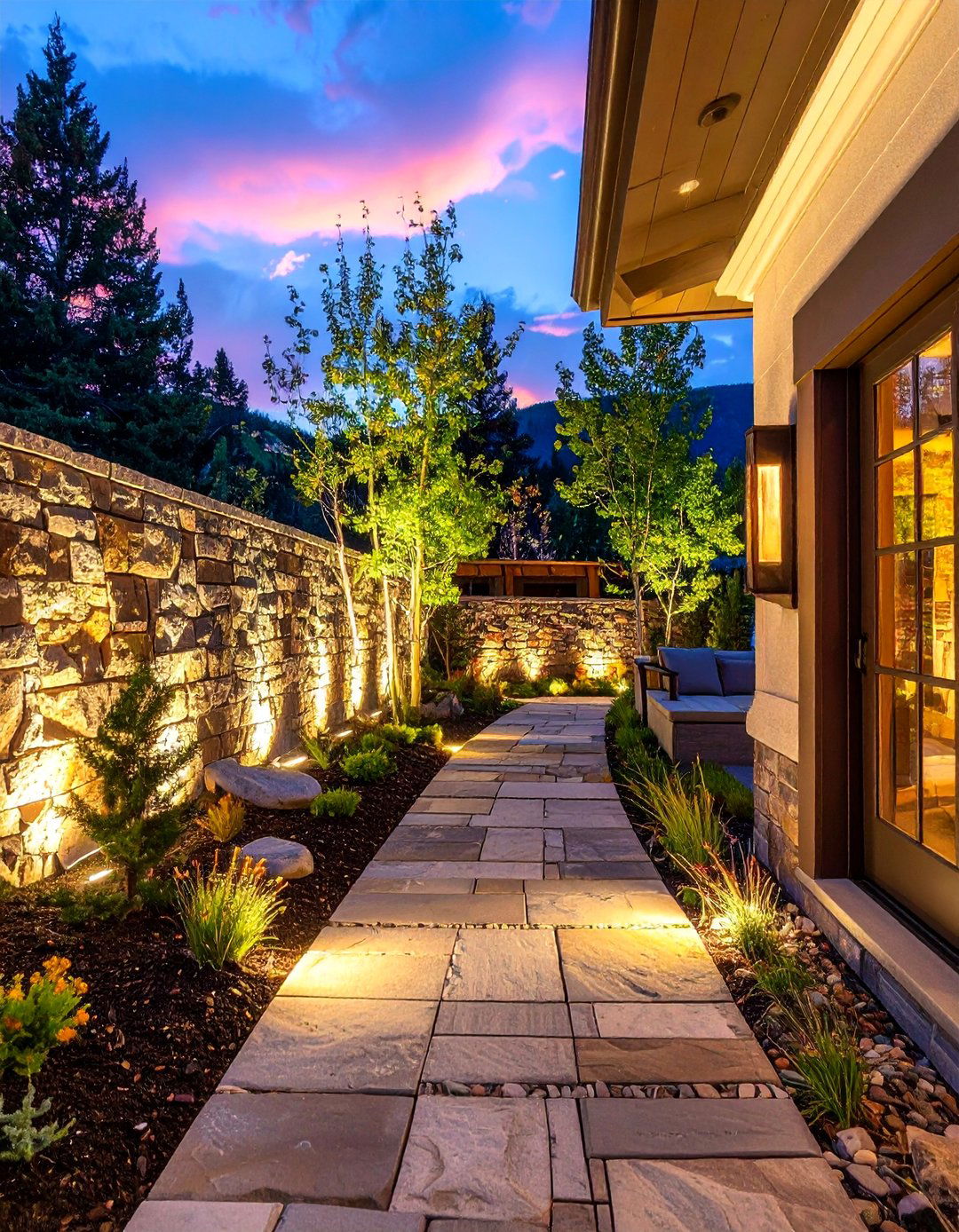
Low-voltage landscape lighting extends the enjoyment of your Colorado yard well into the evening while enhancing safety and security. Strategically placed lights can accentuate the textures of a stone wall, illuminate a pathway, or cast a dramatic silhouette of a sculptural tree. Use uplighting to highlight the beauty of aspen trunks or downlighting from a pergola to create a moonlit ambiance over a patio. Modern LED systems are energy-efficient and long-lasting, providing a warm, inviting glow. Thoughtful lighting design transforms the nighttime landscape, revealing a new dimension of beauty and making your outdoor spaces usable after sunset.
19. Planting a Privacy Screen with Native Evergreens
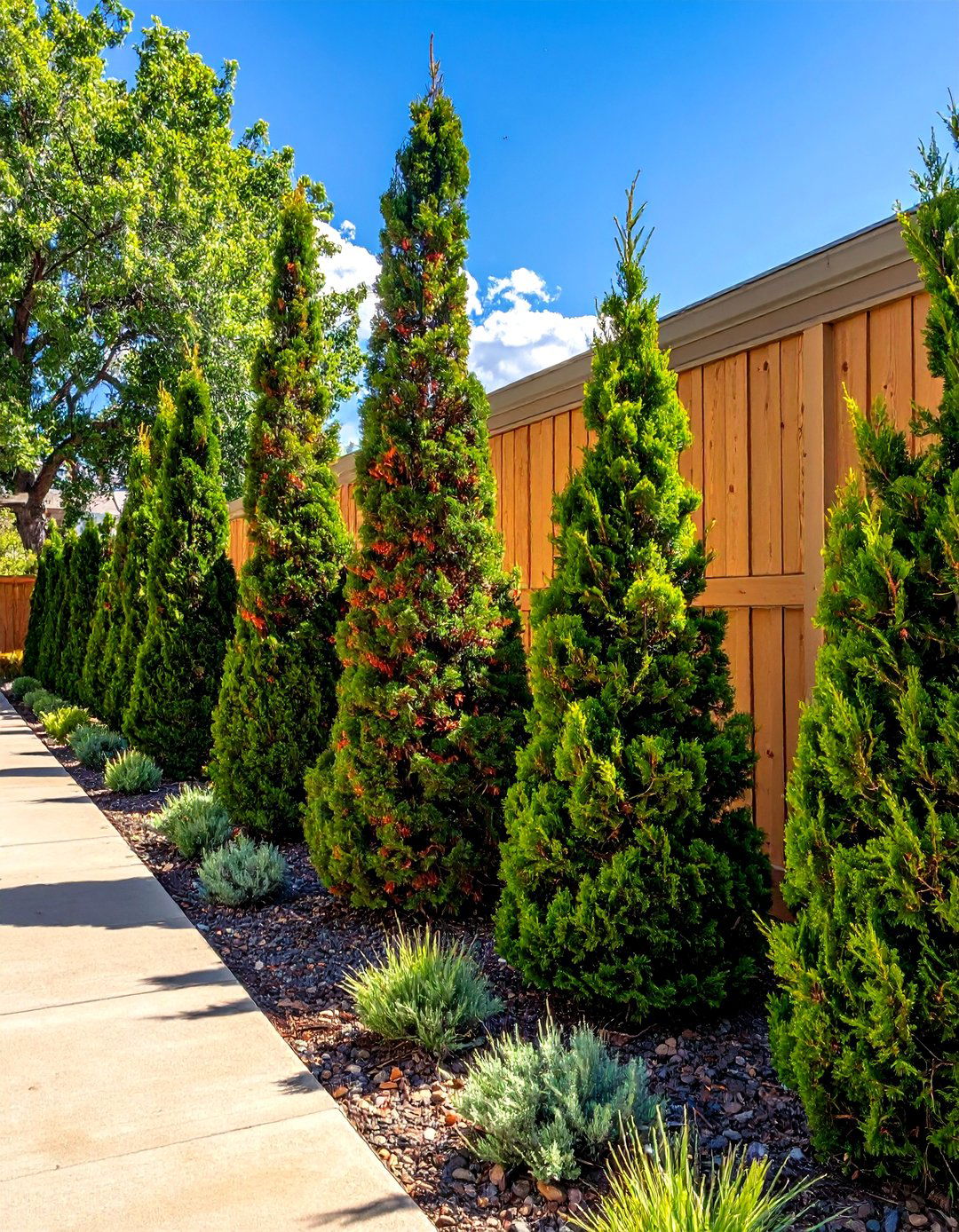
Creating a natural privacy screen with native evergreens is an effective way to block unwanted views and reduce noise while adding year-round greenery to your Colorado landscape. Instead of a uniform hedge, consider a mixed planting of different species like Colorado Spruce, Pinyon Pine, and Rocky Mountain Juniper. Planting them in a staggered, layered arrangement creates a more natural and visually interesting border. These conifers are well-adapted to the local climate, requiring minimal water once established. They provide excellent habitat for birds and other wildlife, turning a functional screen into a living, breathing part of your garden ecosystem.
20. Creating a Mountain Meadow Garden
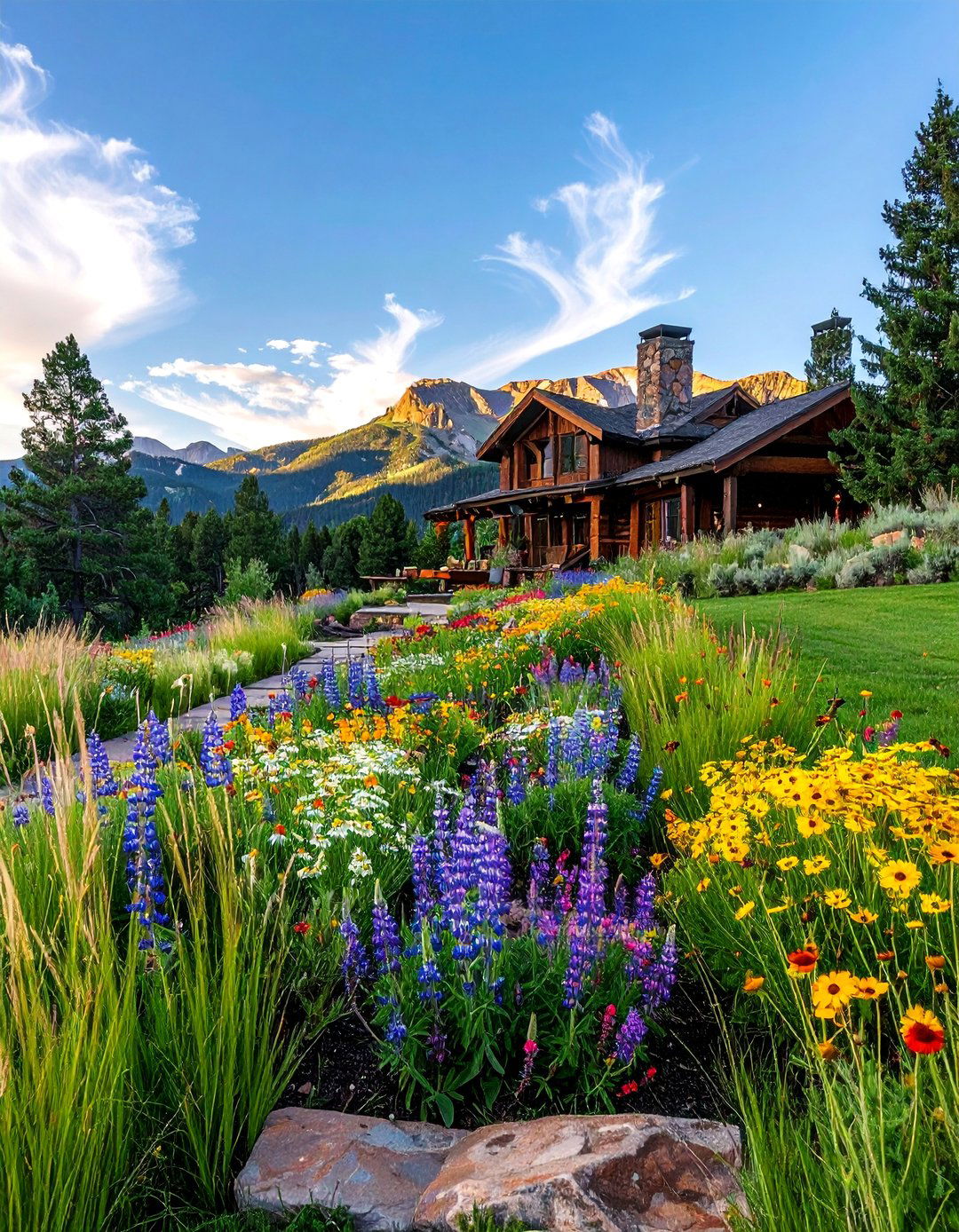
A mountain meadow garden captures the untamed beauty of the Colorado high country and brings it to your backyard. This style involves replacing a traditional lawn with a mix of native grasses and wildflowers. Start with a base of grasses like Buffalo Grass or Blue Grama, then intersperse drifts of perennials such as Penstemon, Gaillardia, and Lupine. The result is a dynamic, low-water landscape that ebbs and flows with the seasons, attracting a host of pollinators. It requires less mowing, fertilizing, and watering than a conventional lawn, offering a sustainable and beautiful alternative that celebrates the local flora and natural aesthetic of the Rocky Mountains.
21. Building a Flagstone Walkway
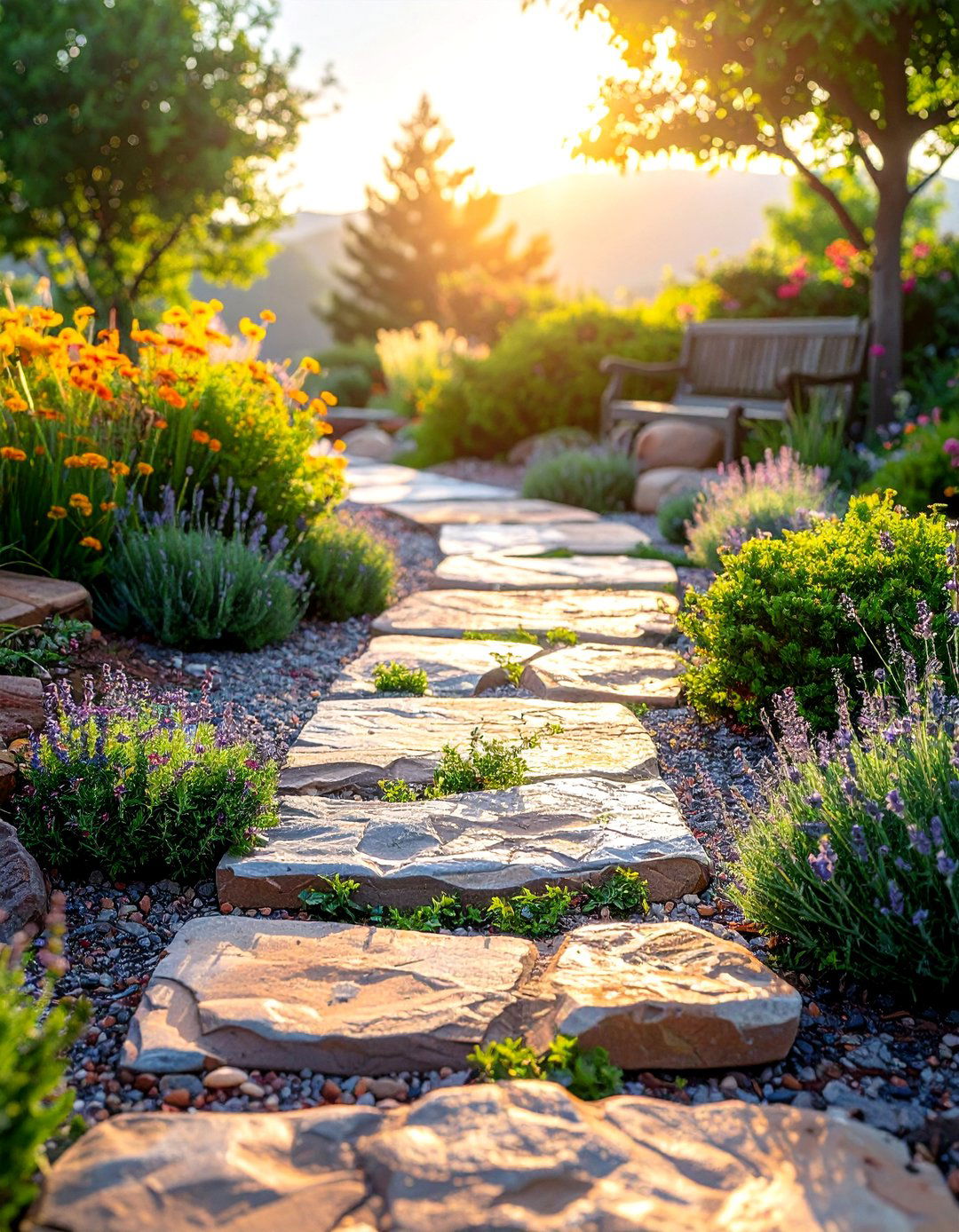
A flagstone walkway provides a charming and informal path through your Colorado garden, connecting different areas with natural style. Using irregular, flat pieces of stone like sandstone or quartzite, you can create a durable and slip-resistant surface. Setting the stones directly in soil or gravel with small gaps in between allows for planting low-growing, step-able groundcovers like thyme or sedum. This softens the look of the path and helps it blend into the surrounding garden. A flagstone walkway meanders gracefully through the landscape, guiding visitors on a journey of discovery and adding a rustic, handcrafted feel to the yard.
22. Designing a Shaded Woodland Retreat
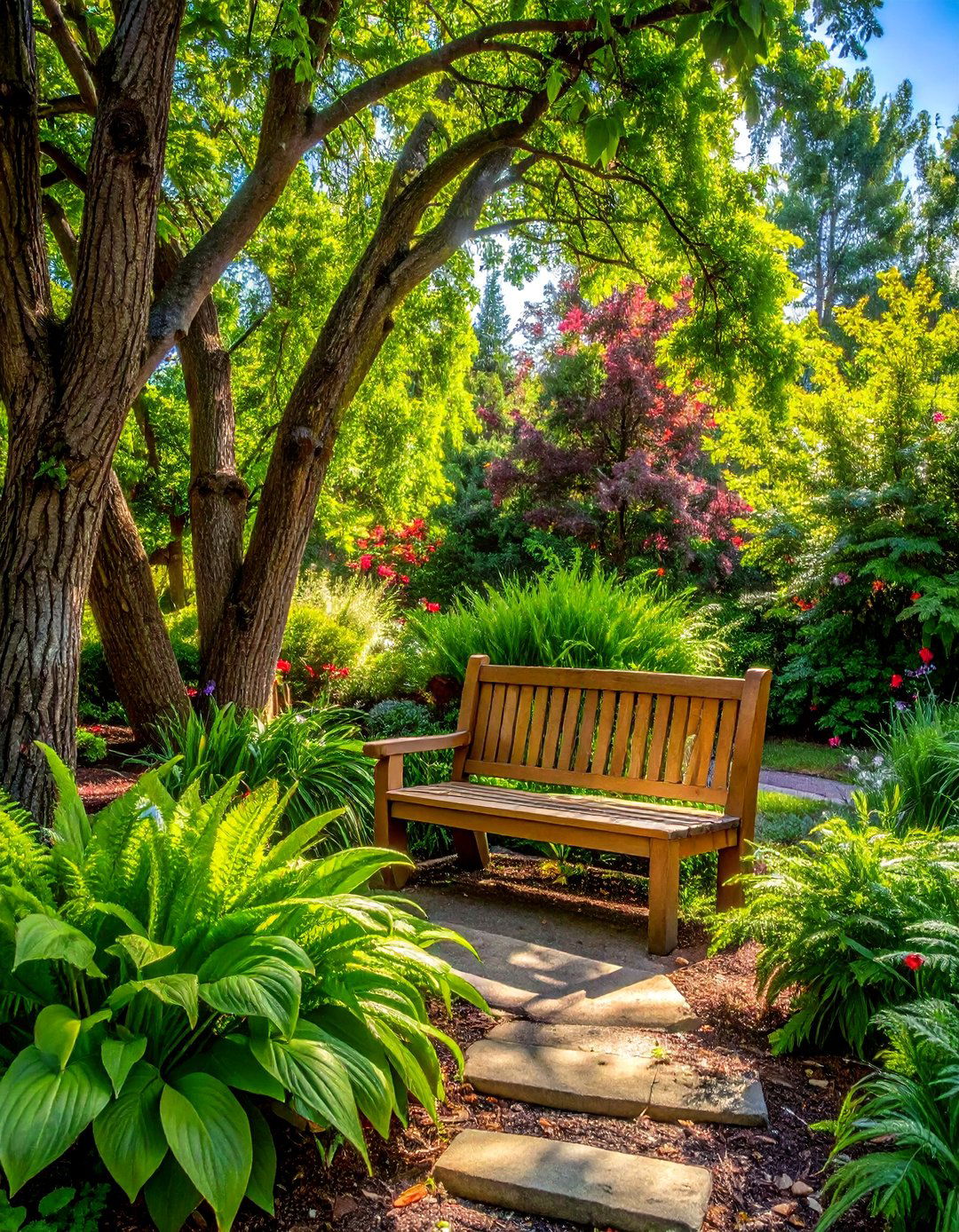
Even in sunny Colorado, creating a shaded woodland retreat can provide a cool and tranquil escape. This can be achieved by planting a small grove of trees like aspens or narrowleaf cottonwoods, or by utilizing the shade of existing mature trees. Underneath the canopy, plant a rich tapestry of shade-loving perennials such as columbine, hostas, and ferns. A simple bench or a pair of Adirondack chairs nestled among the plants creates a perfect spot for reading or quiet contemplation. Adding a moss-covered rock or a small, trickling water feature can enhance the serene, forest-like atmosphere, making it feel like a private mountain hideaway.
23. Using Potentilla for Hardy, Long-Blooming Shrubs

For a hardy and reliable shrub that offers season-long color, Potentilla is an excellent choice for any Colorado landscape. This tough, drought-tolerant plant thrives in the state's challenging conditions, including poor soil and full sun. From late spring until the first frost, it produces a profusion of small, cheerful flowers in shades of yellow, white, pink, or orange. Its fine-textured, fern-like foliage adds a soft touch to garden borders or foundation plantings. Potentilla is low-maintenance, requiring only occasional pruning to maintain its shape, making it a workhorse plant for adding consistent, long-lasting blooms with minimal effort.
24. Creating a Children’s Natural Play Area
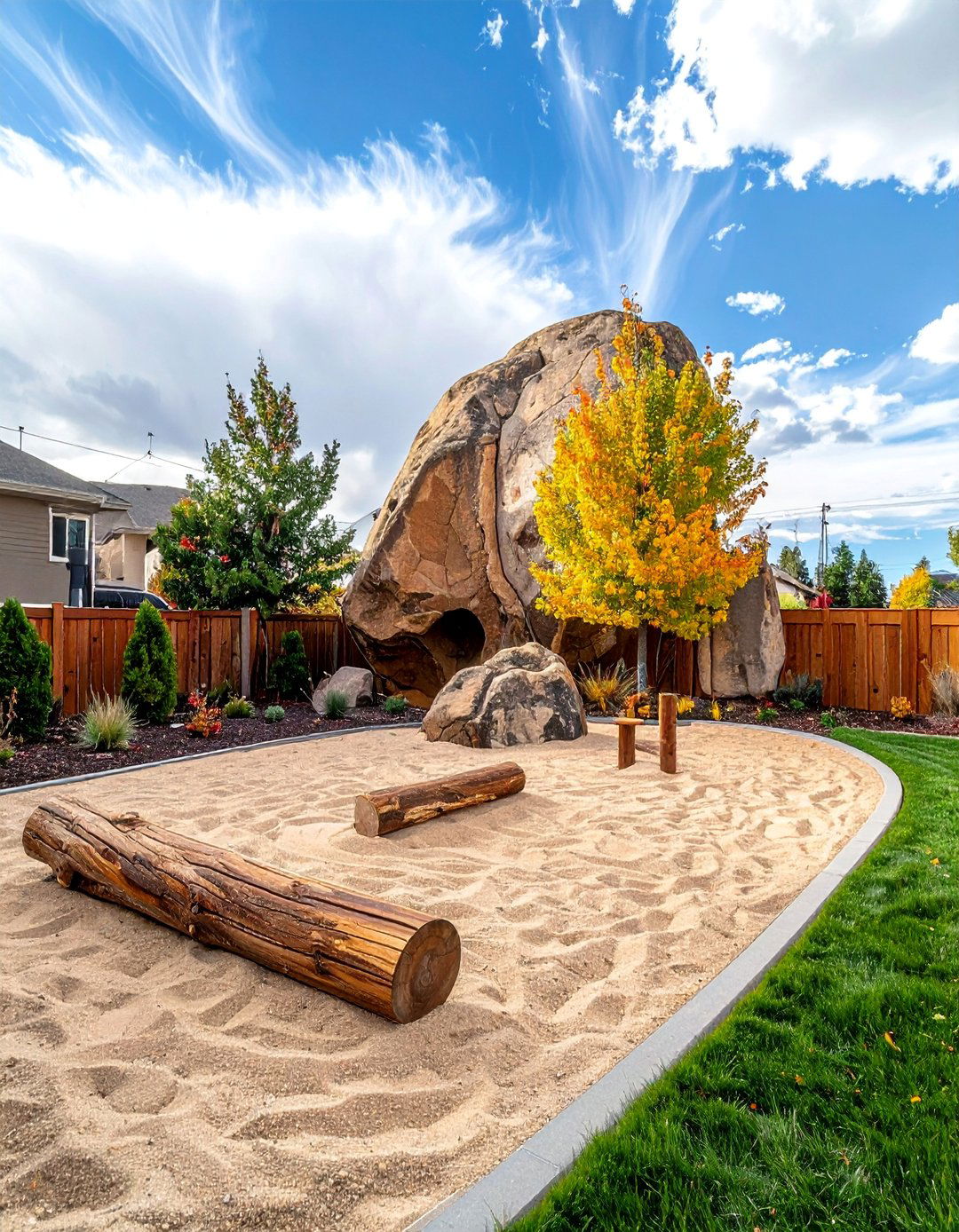
A natural play area offers a creative and engaging alternative to traditional plastic playground equipment, blending seamlessly into a Colorado landscape. Use natural elements like logs for balancing beams, large boulders for climbing, and a sand or pebble pit for sensory play. A "living" tunnel made from willow branches or a small fort constructed from fallen limbs can spark imagination. Planting hardy, non-toxic plants nearby adds to the experience. This type of play space encourages children to connect with nature, develop motor skills, and engage in imaginative play, all within a beautiful setting that complements the rest of your yard.
25. Implementing Drip Irrigation for Water Efficiency

Drip irrigation is the most efficient way to water plants in Colorado's dry climate, delivering water directly to the root zone and minimizing loss to evaporation and runoff. This system uses a network of tubes and emitters to provide a slow, steady supply of water to individual plants, trees, and shrubs. It is ideal for garden beds, vegetable gardens, and container plants. By tailoring the system to the specific needs of different plant zones, you can ensure each plant gets the right amount of moisture without wasting a drop. A drip system promotes deeper root growth and healthier plants while significantly conserving water.
26. Designing a Contemporary Zen Garden
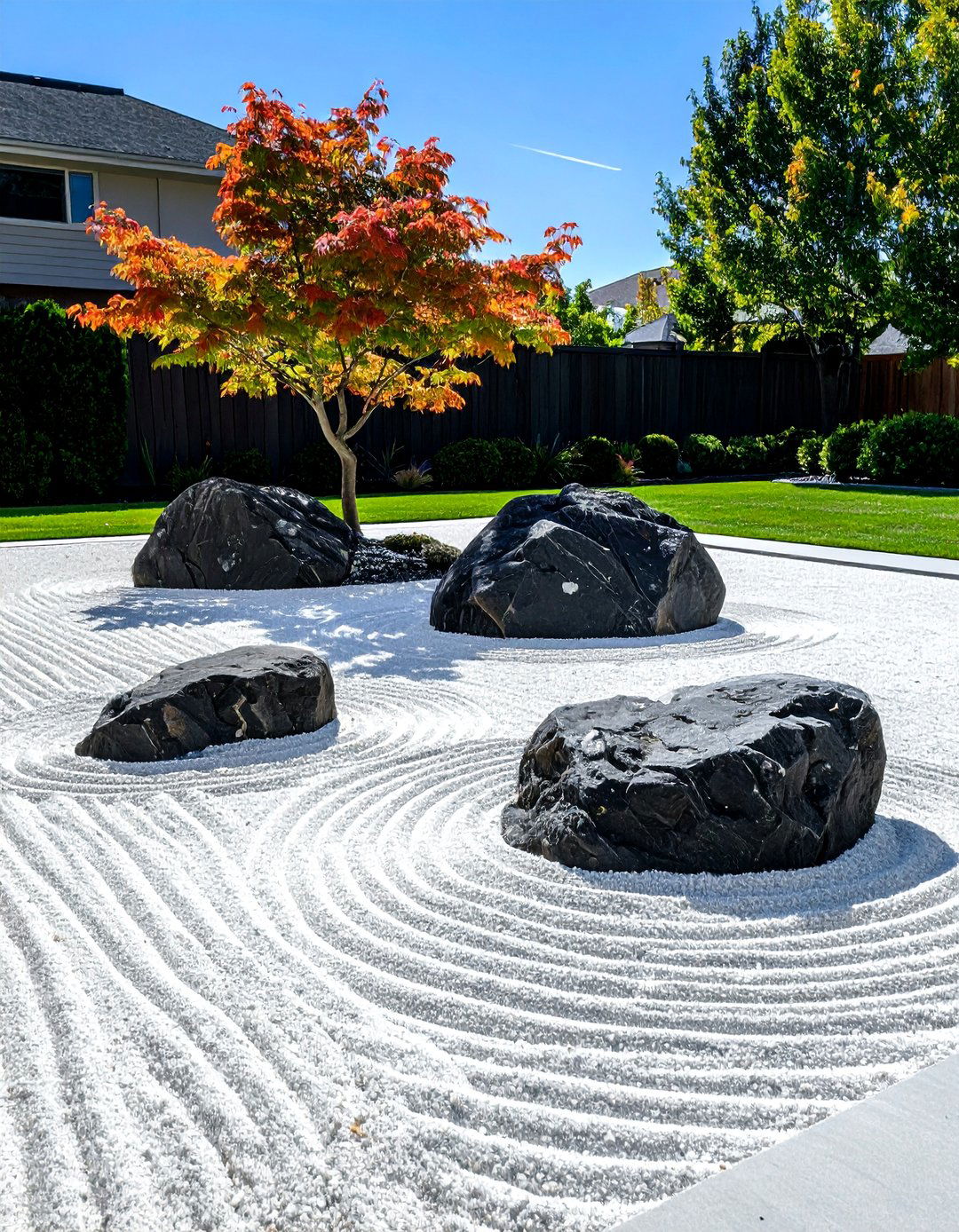
A contemporary Zen garden offers a peaceful, low-maintenance landscape solution that feels both modern and timeless. This design emphasizes simplicity and tranquility, using a limited palette of materials like raked gravel to represent water, carefully placed boulders to symbolize mountains, and a few sculptural plants like a dwarf pine or Japanese maple as focal points. The clean lines and uncluttered space create a calming atmosphere perfect for meditation or quiet reflection. A simple bamboo screen or a sleek Corten steel feature can enhance the modern aesthetic. This minimalist approach is naturally water-wise and provides a serene escape from the stresses of daily life.
27. Using Russian Sage for a Splash of Purple

Russian Sage is a fantastic perennial for Colorado gardens, known for its airy texture and long-lasting spikes of lavender-purple flowers. This extremely drought-tolerant and heat-loving plant thrives in full sun and well-drained soil, making it perfectly suited for a xeric landscape. It blooms from mid-summer through fall, providing a cool splash of color when many other plants are fading. Its silvery-gray foliage is aromatic and contrasts beautifully with other plants. Planted in masses, Russian Sage creates a stunning, hazy cloud of color that attracts bees and hummingbirds, adding life and vibrancy to the late-season garden with very little maintenance.
28. Constructing a Gabion Wall Feature

Gabion walls, which are wire cages filled with rocks, offer a unique and modern way to create retaining walls, benches, or decorative features in a Colorado landscape. This technique combines an industrial aesthetic with natural materials, resulting in a look that is both rugged and sophisticated. You can fill the cages with locally sourced river rock or other stones to match your design scheme. Gabion walls are permeable, allowing for excellent drainage, and are extremely durable. They can be used to terrace a steep slope, create a striking property boundary, or serve as a base for a rustic outdoor bench, adding texture and architectural interest.
29. Planting Creeping Thyme as a Groundcover
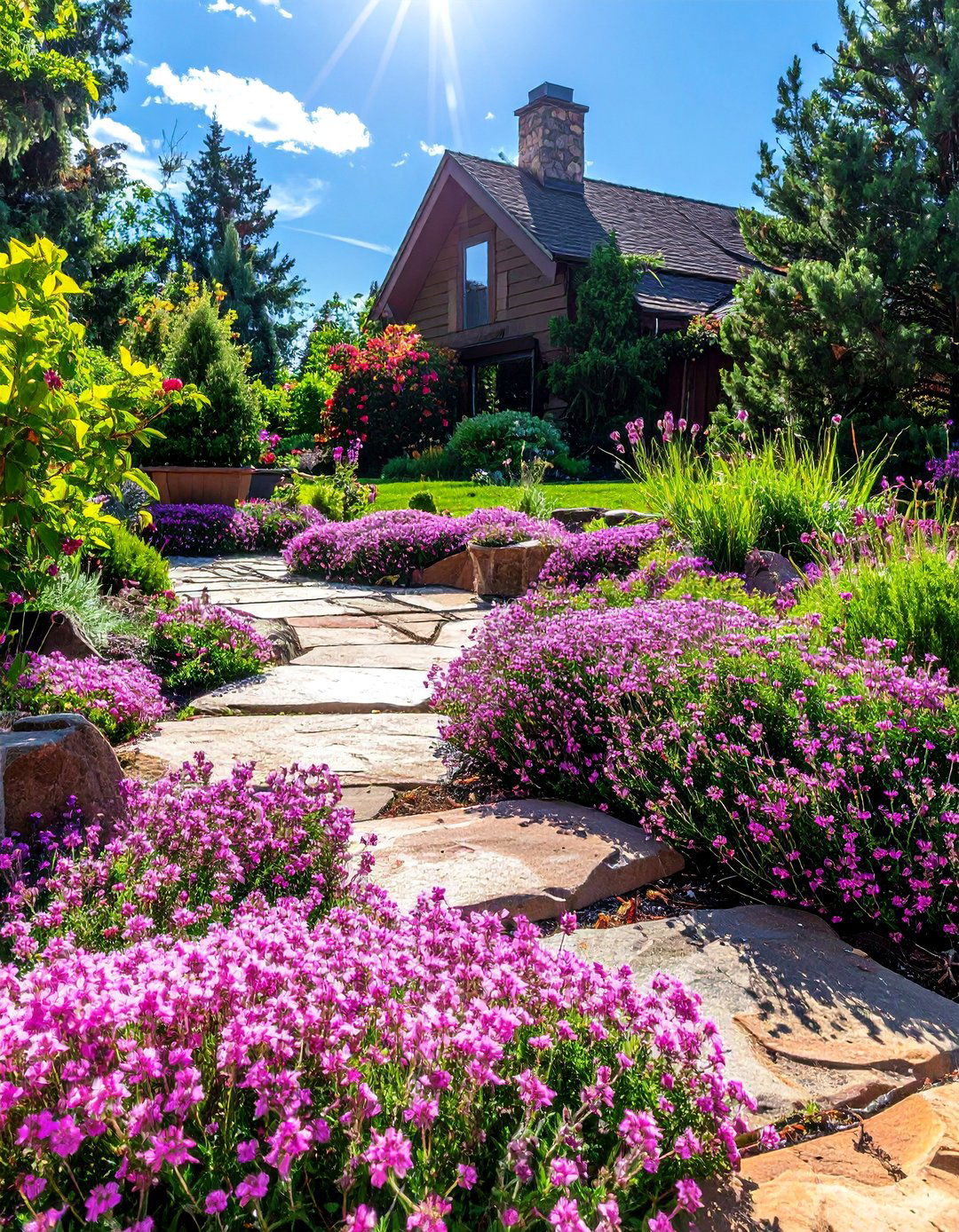
Creeping Thyme is a superb groundcover for sunny, dry areas in a Colorado yard, forming a dense, fragrant mat that can withstand foot traffic. This hardy, low-growing perennial is perfect for planting between flagstones, along pathways, or on slopes where mowing is difficult. In early summer, it becomes covered in tiny pink, purple, or white flowers, creating a carpet of color and attracting bees. It is exceptionally drought-tolerant once established and releases a pleasant scent when walked upon. Creeping Thyme is an excellent lawn alternative that suppresses weeds, requires very little water, and adds a soft, aromatic touch to the landscape.
30. Building a Deck with Mountain Views
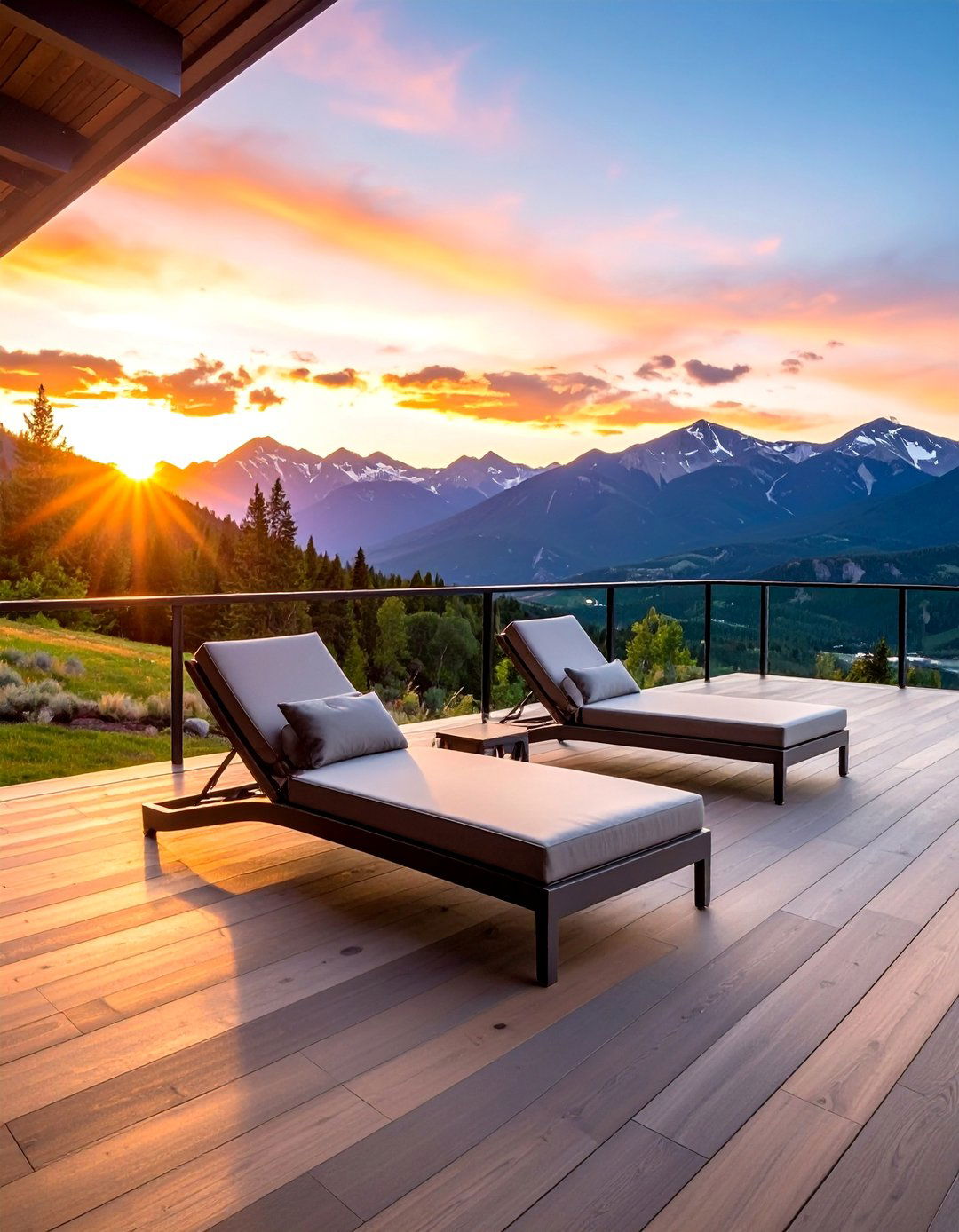
For many Colorado homes, a well-designed deck is the ultimate outdoor living space, purpose-built to capture breathtaking mountain views. When planning your deck, consider the orientation to maximize sun exposure or afternoon shade, depending on your preference. Using durable materials like composite decking or resilient woods such as redwood or cedar ensures longevity in the harsh climate. Incorporating built-in seating, planters, or multiple levels can add functionality and style. Glass panel railings provide safety without obstructing the panoramic vistas. A deck becomes a viewing platform and an extension of your indoor living space, perfect for dining, relaxing, and soaking in the magnificent scenery.
Conclusion:
Ultimately, successful Colorado landscaping hinges on working with, not against, the natural environment. By choosing native and drought-tolerant plants, utilizing local stone for hardscaping, and designing water-wise features, you can craft a stunning and sustainable yard. These ideas provide a framework for creating functional outdoor living spaces, from cozy fire pits to expansive patios, that resonate with the rugged beauty of the Rocky Mountains. A thoughtful design will not only enhance your home's curb appeal but also create a personal oasis that thrives in Colorado's unique climate, offering beauty and enjoyment for years to come.


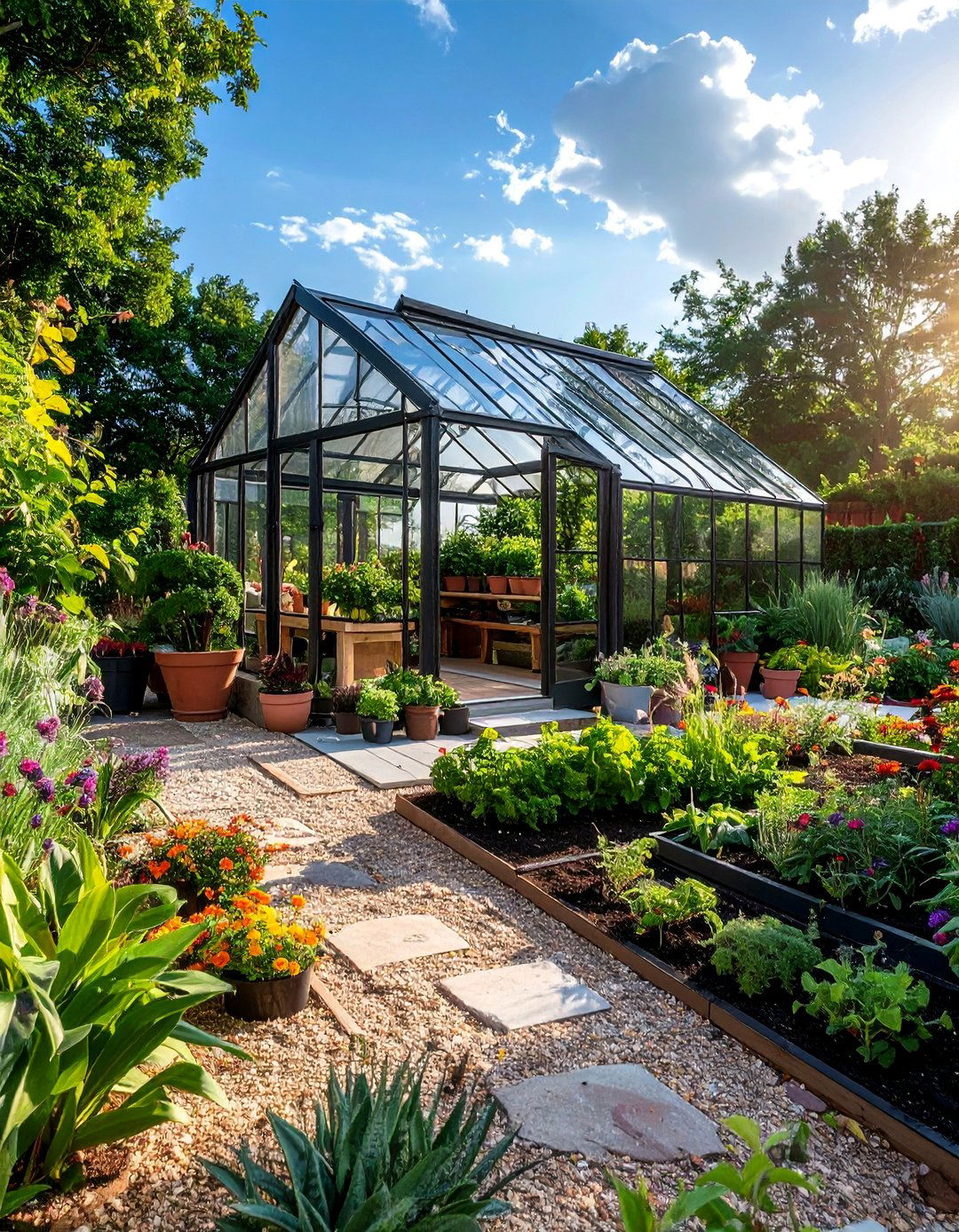
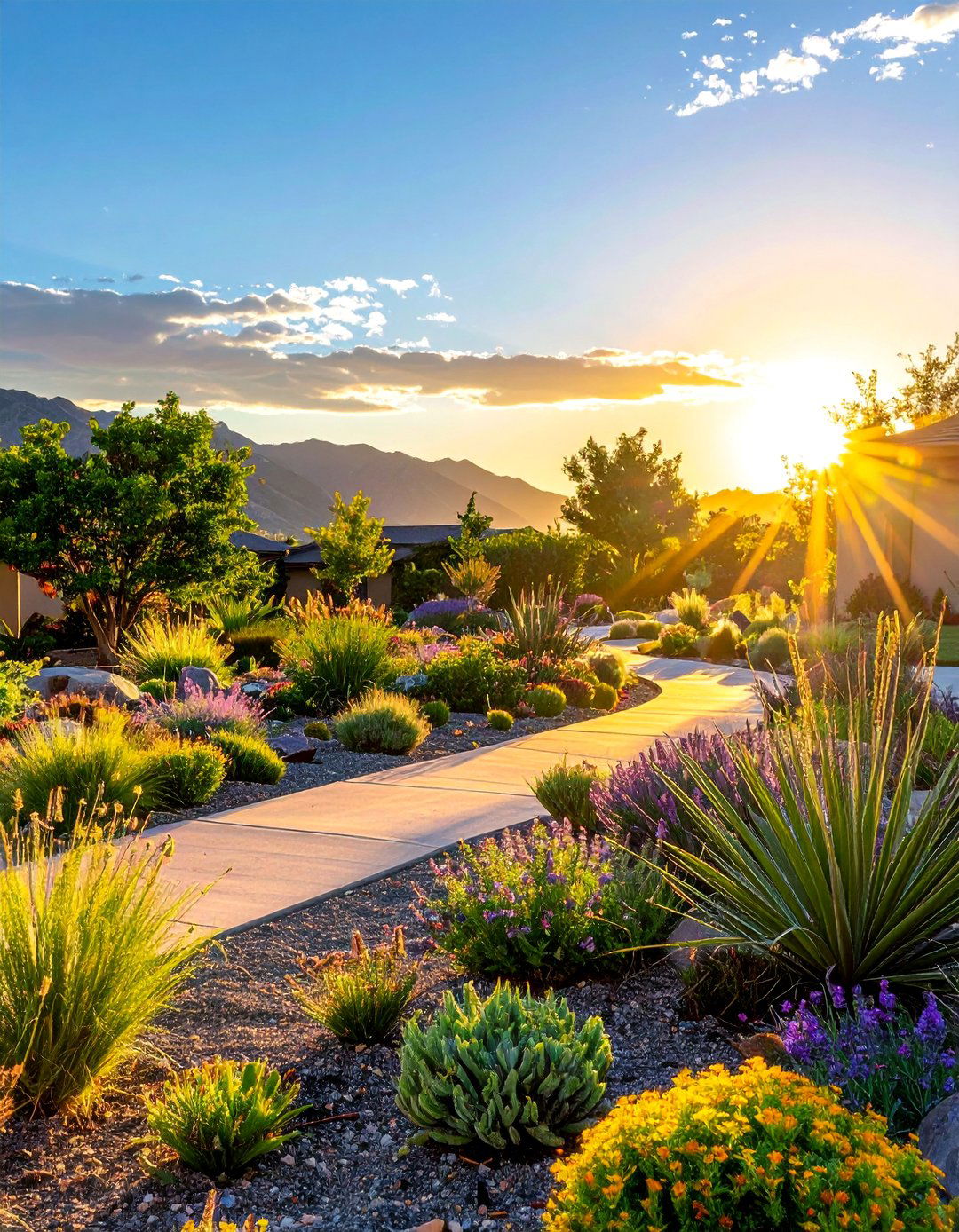
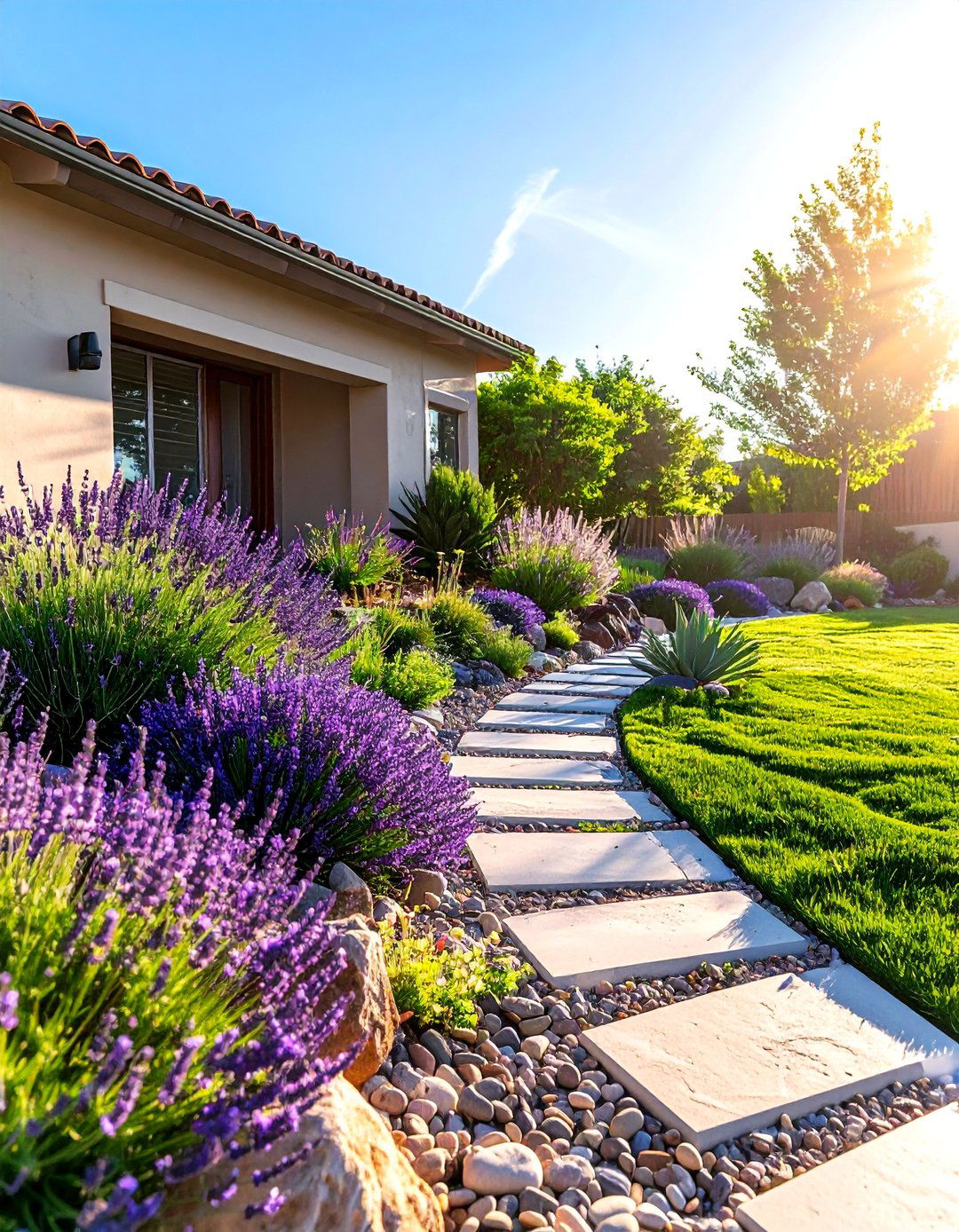
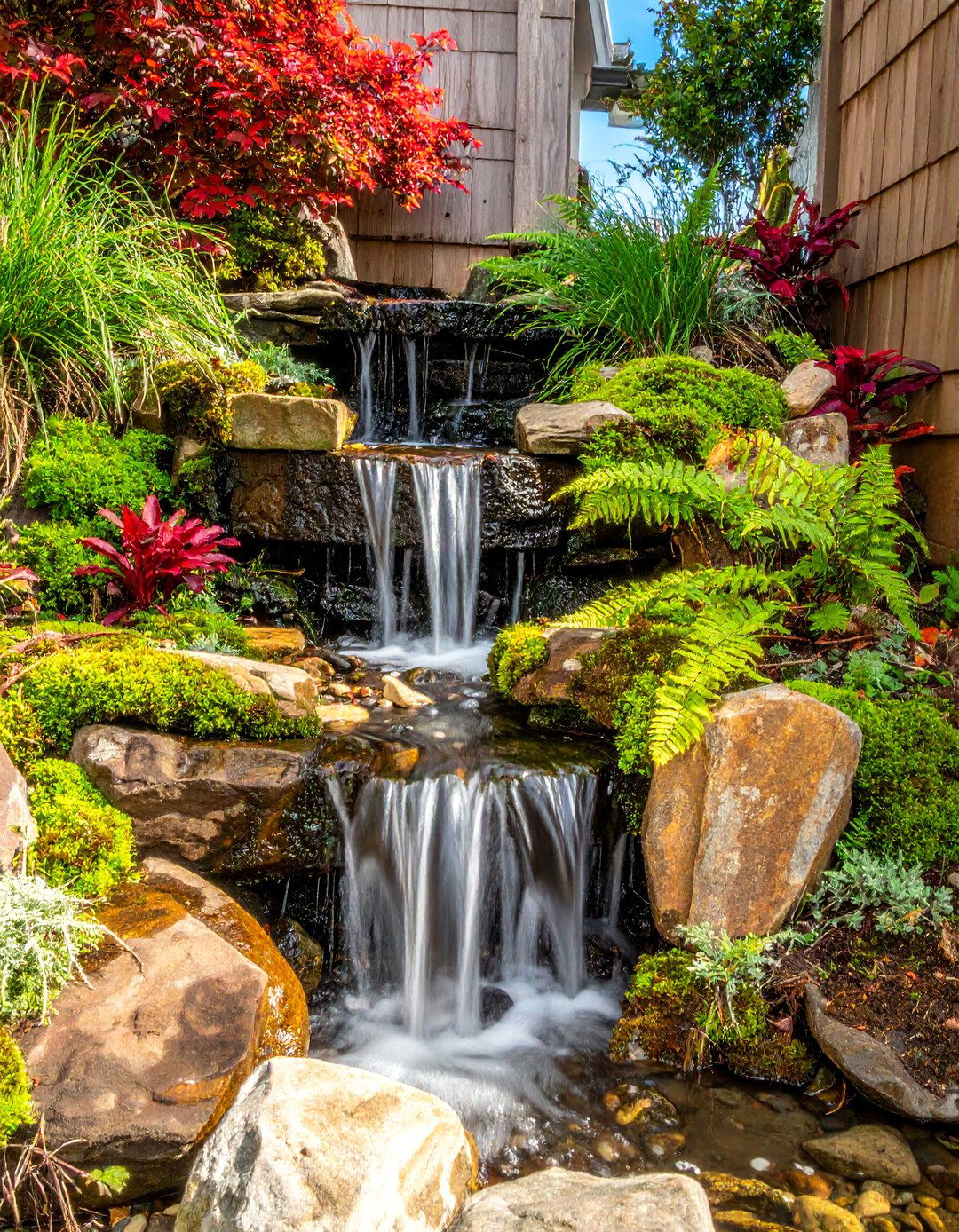

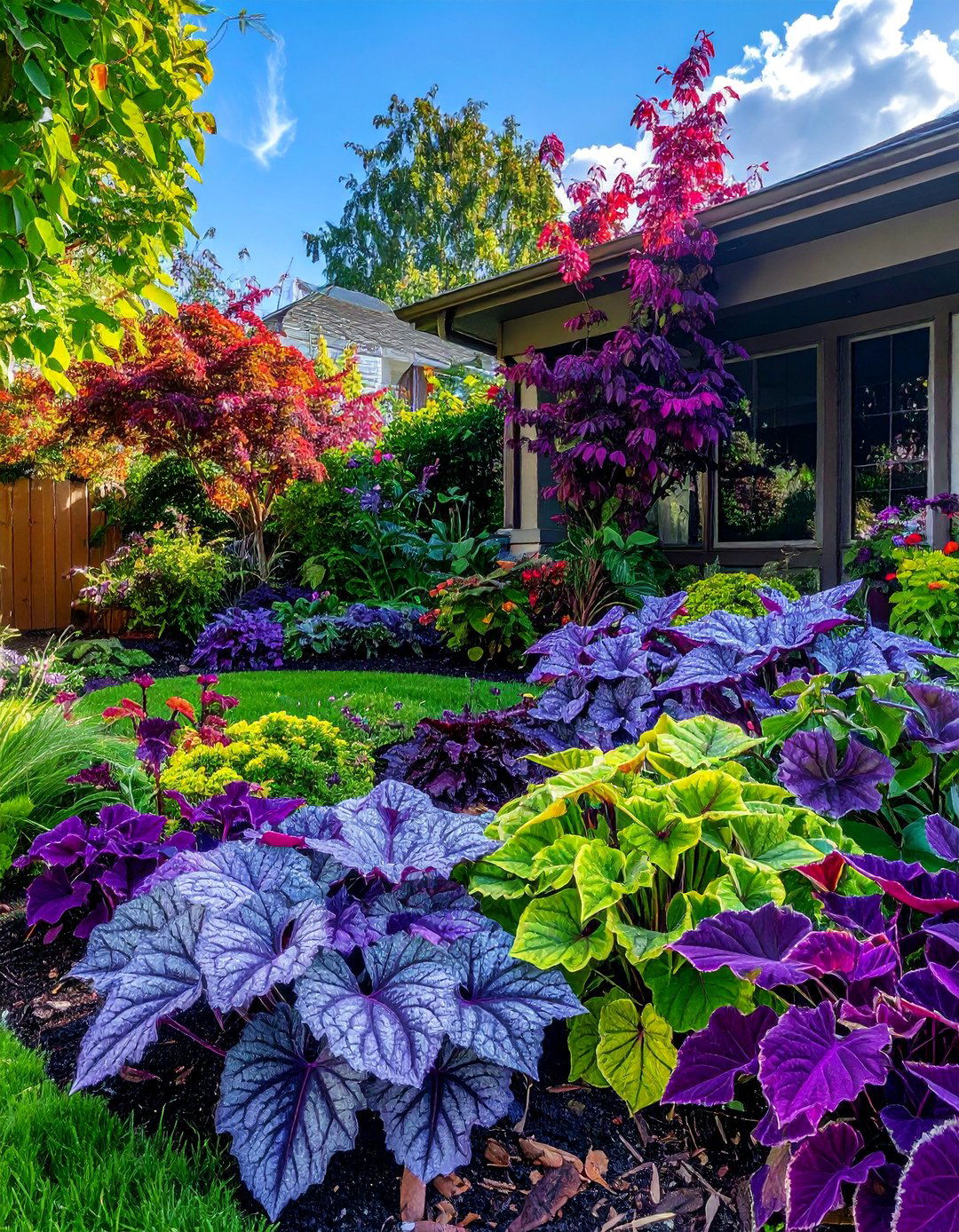
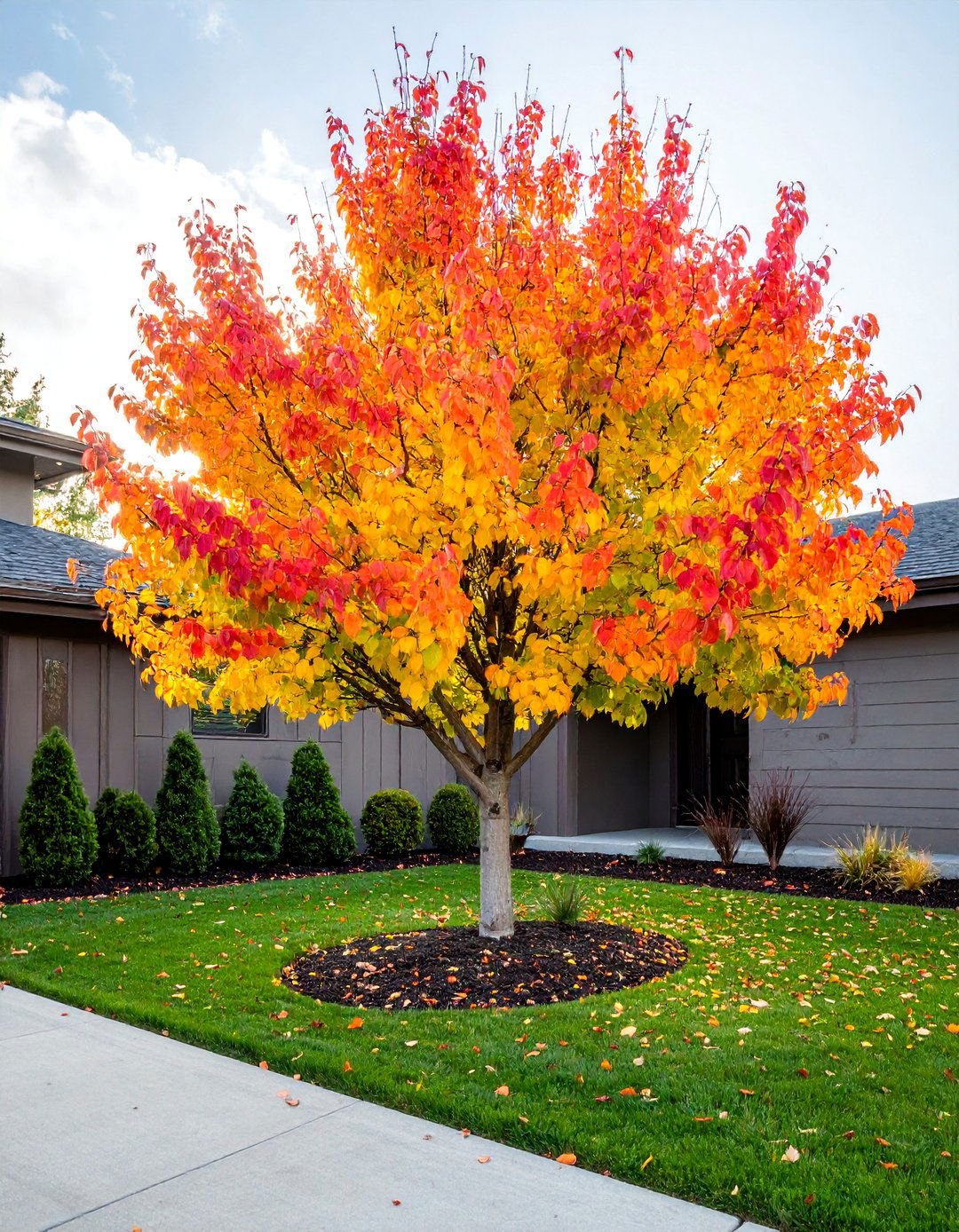
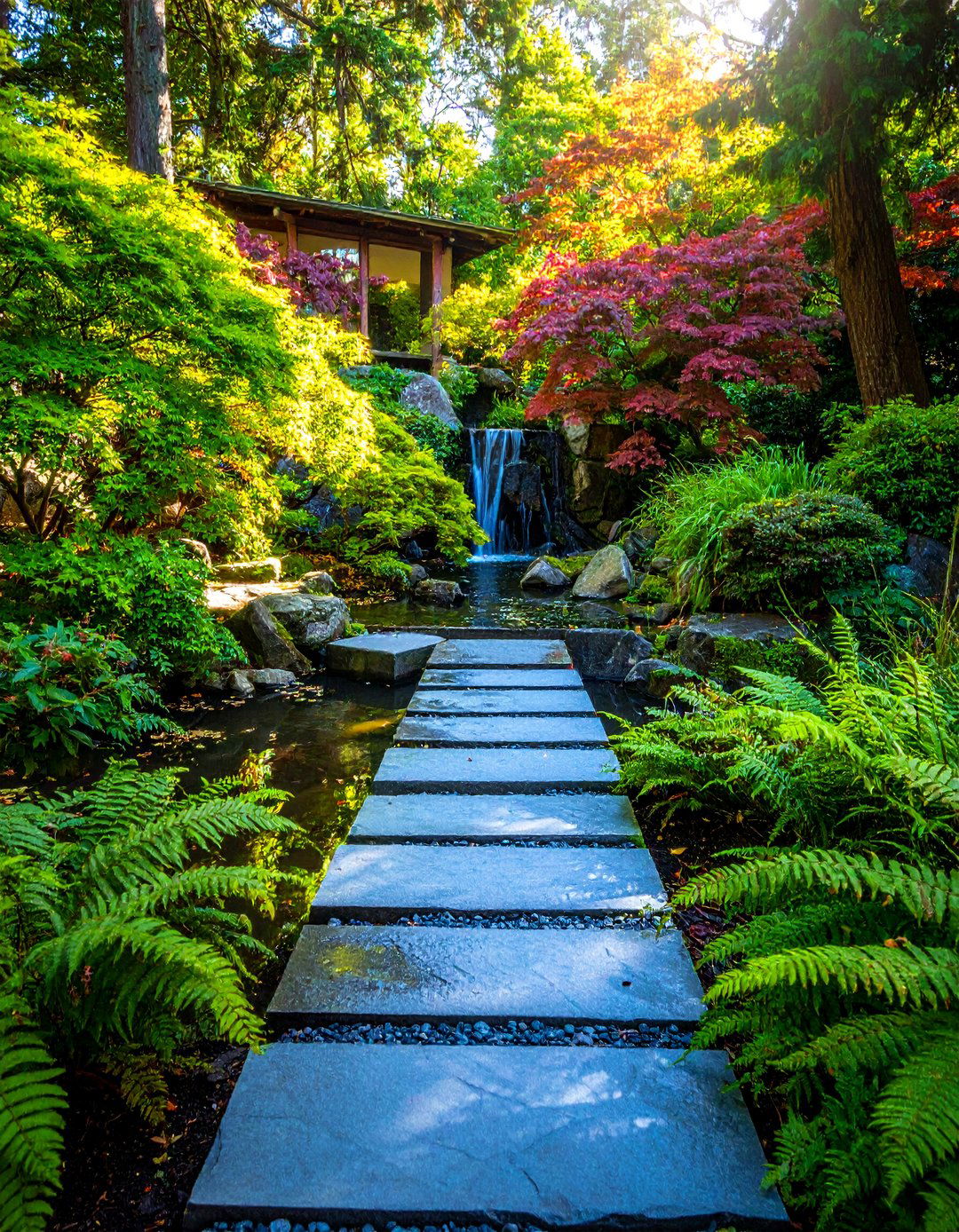

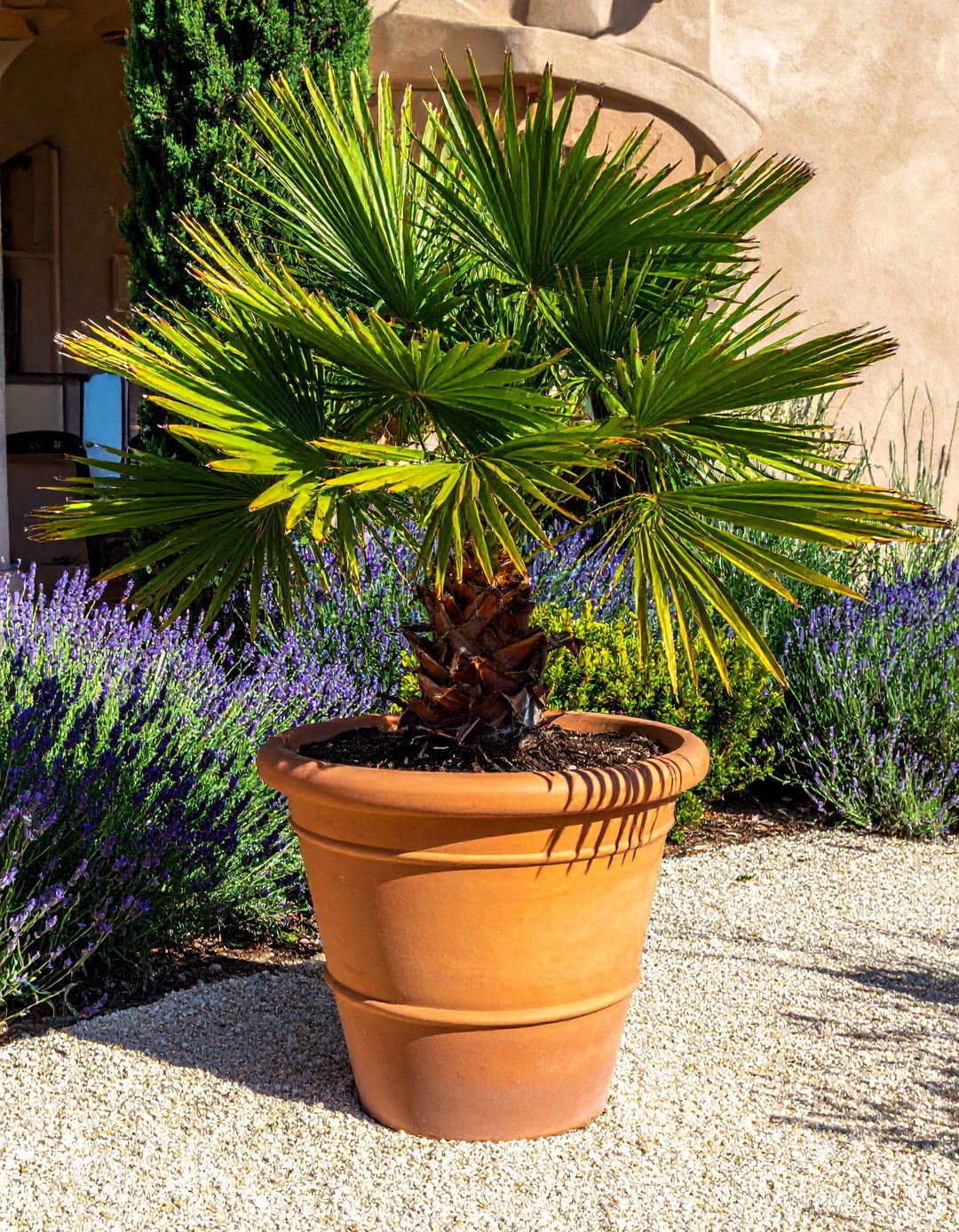
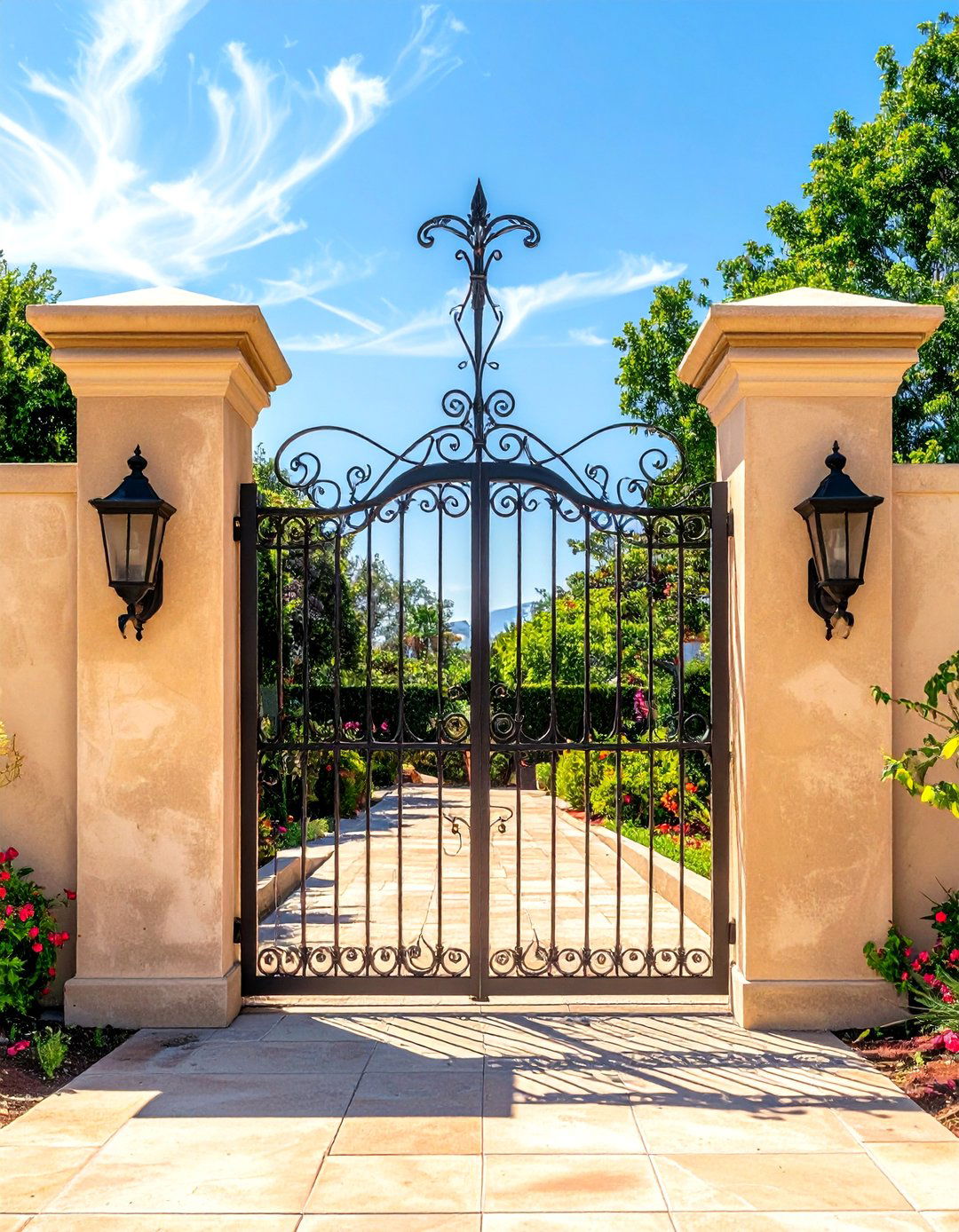
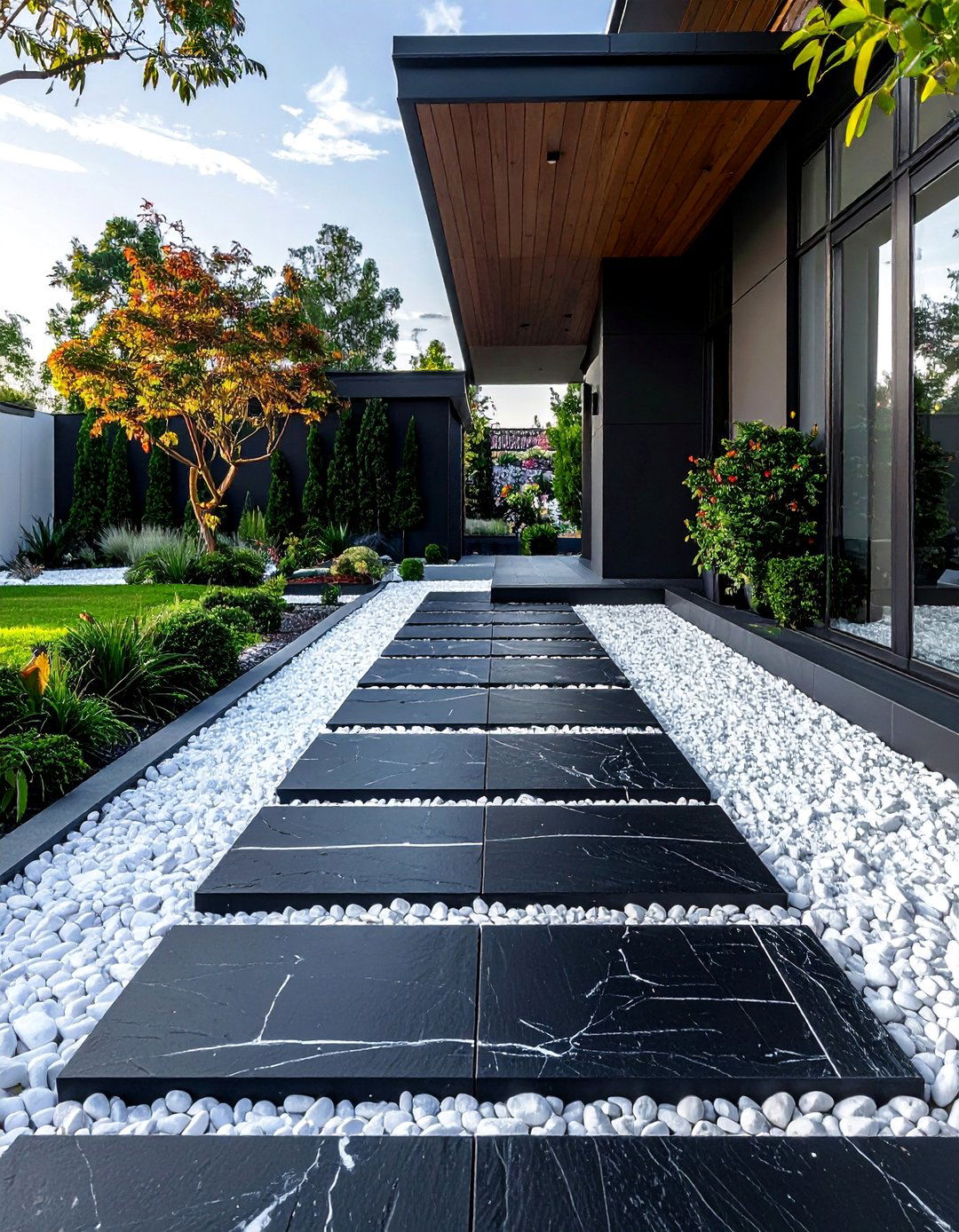
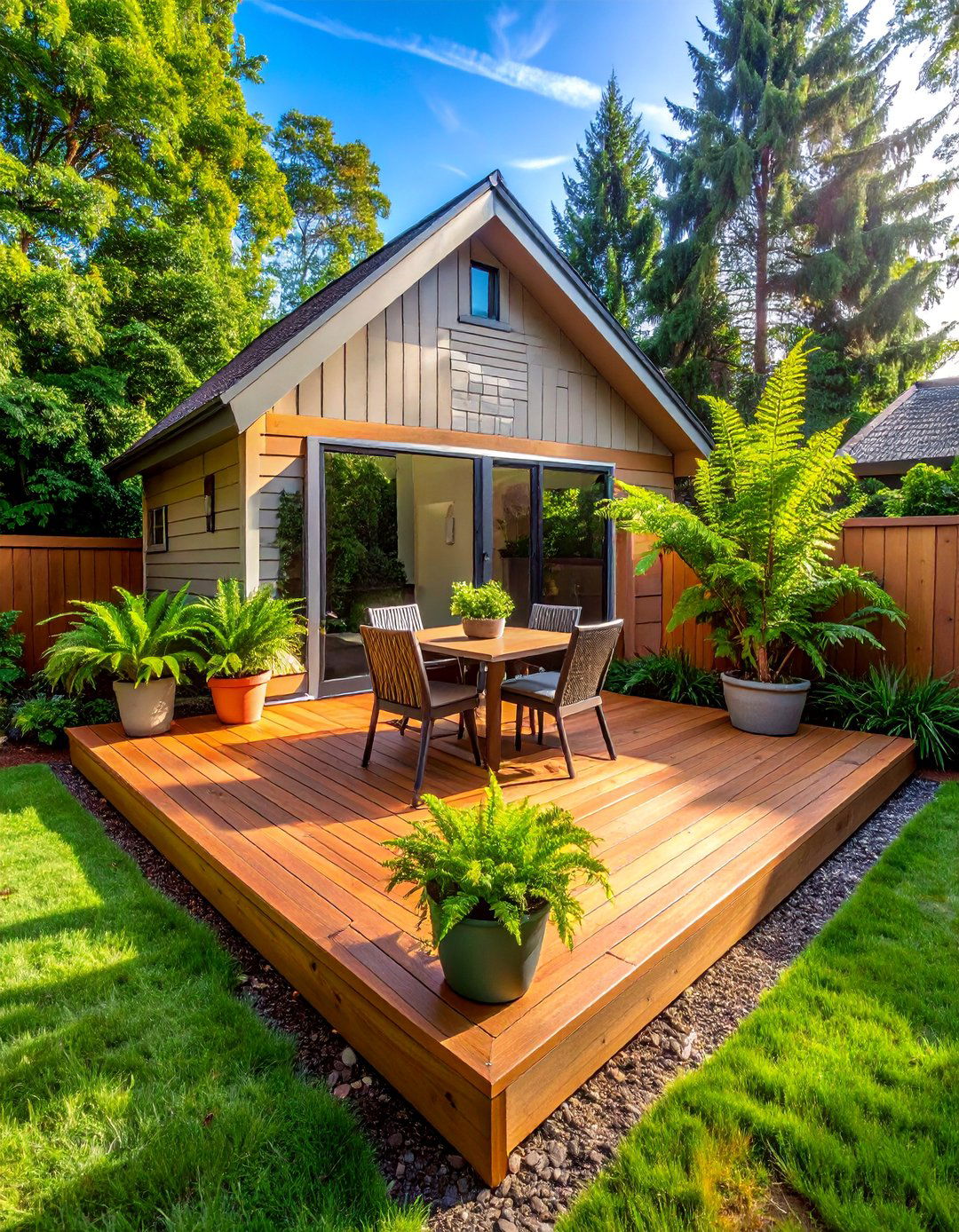
Leave a Reply